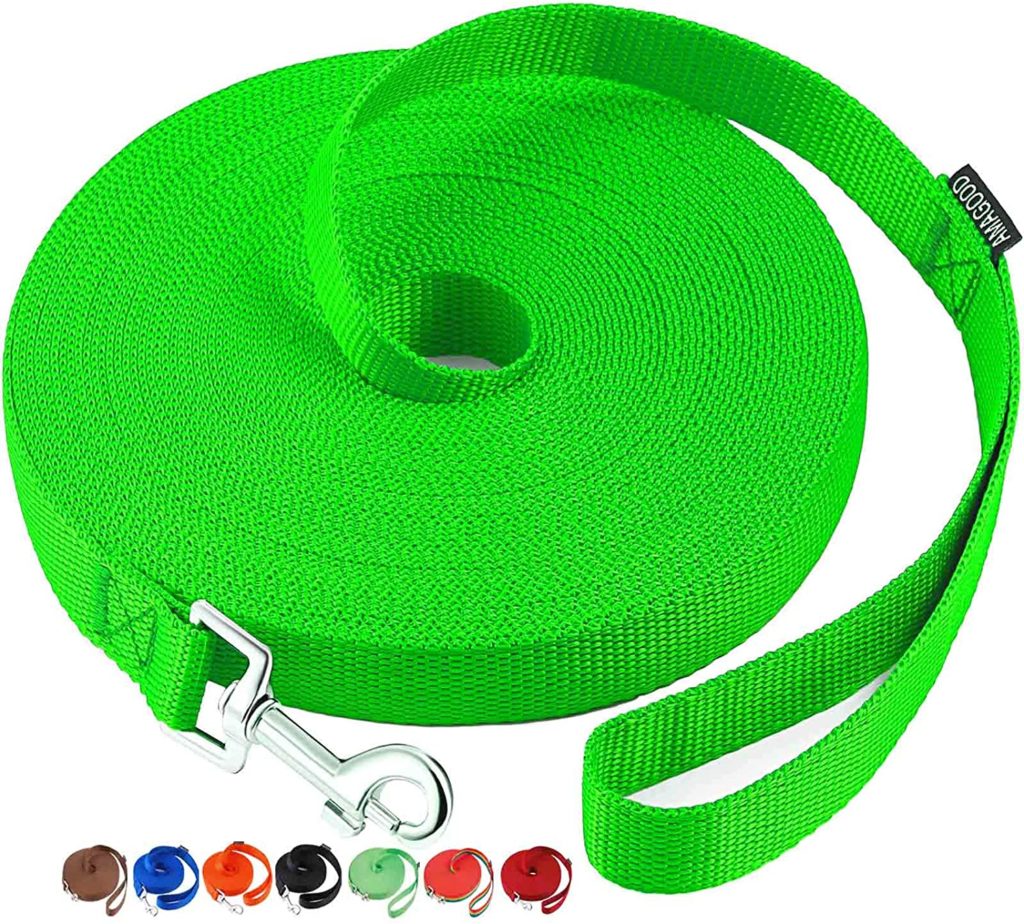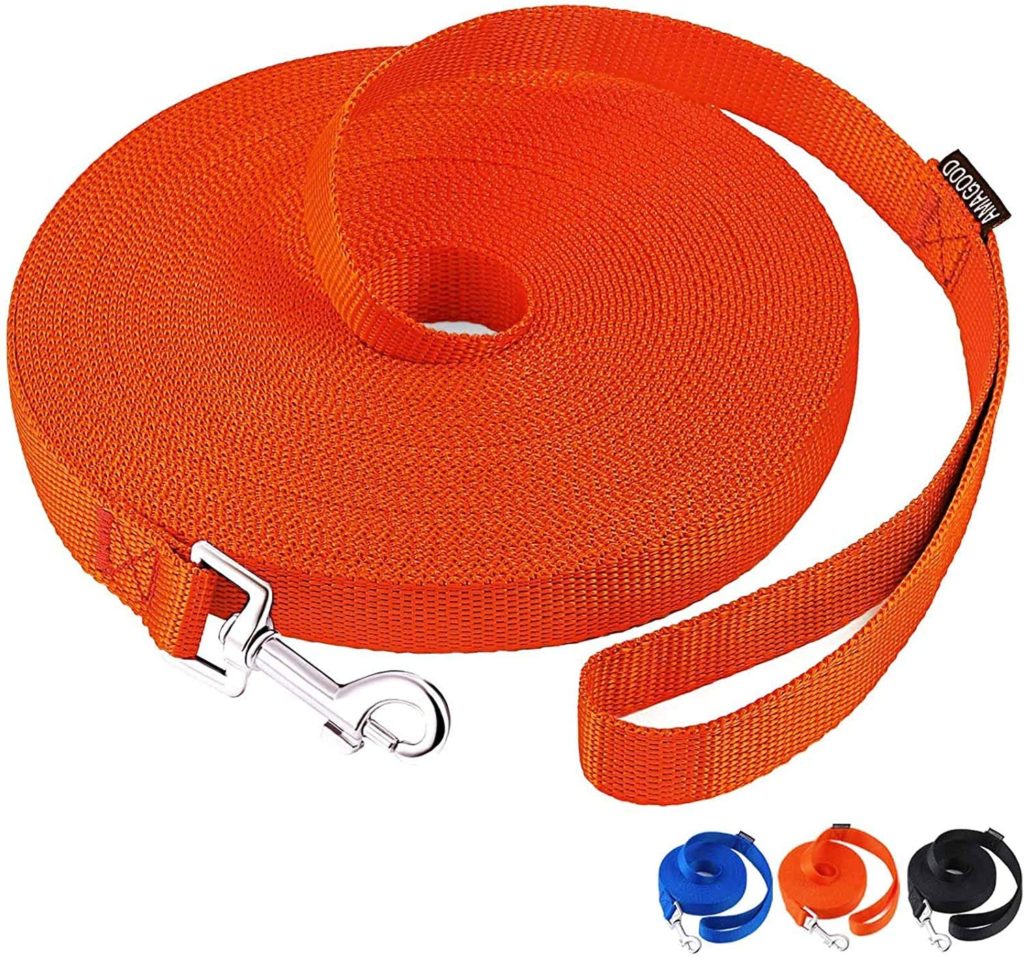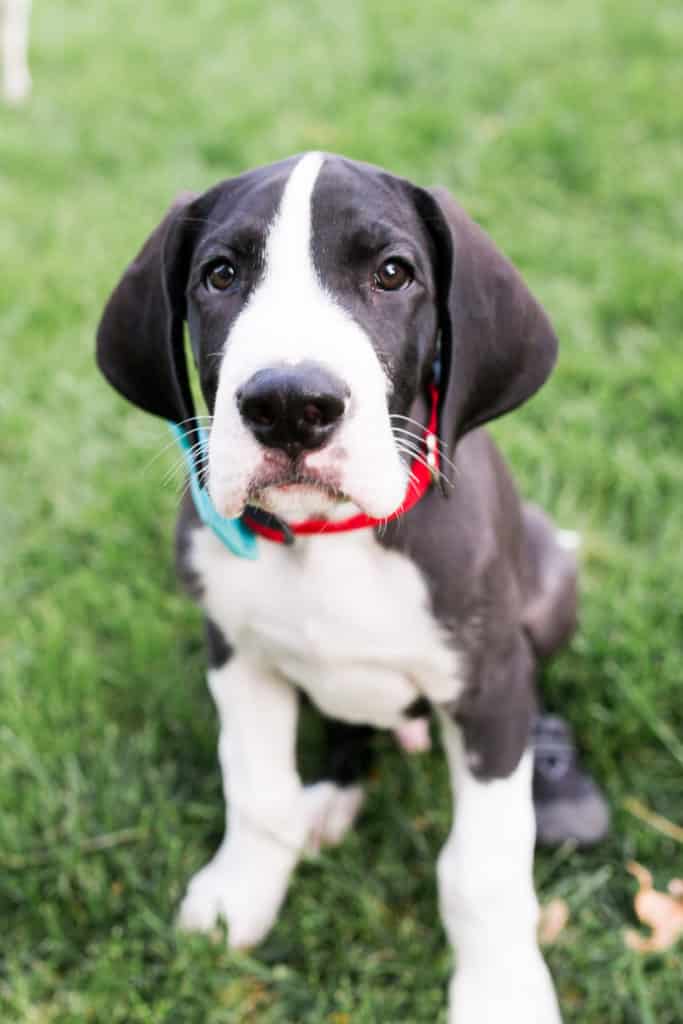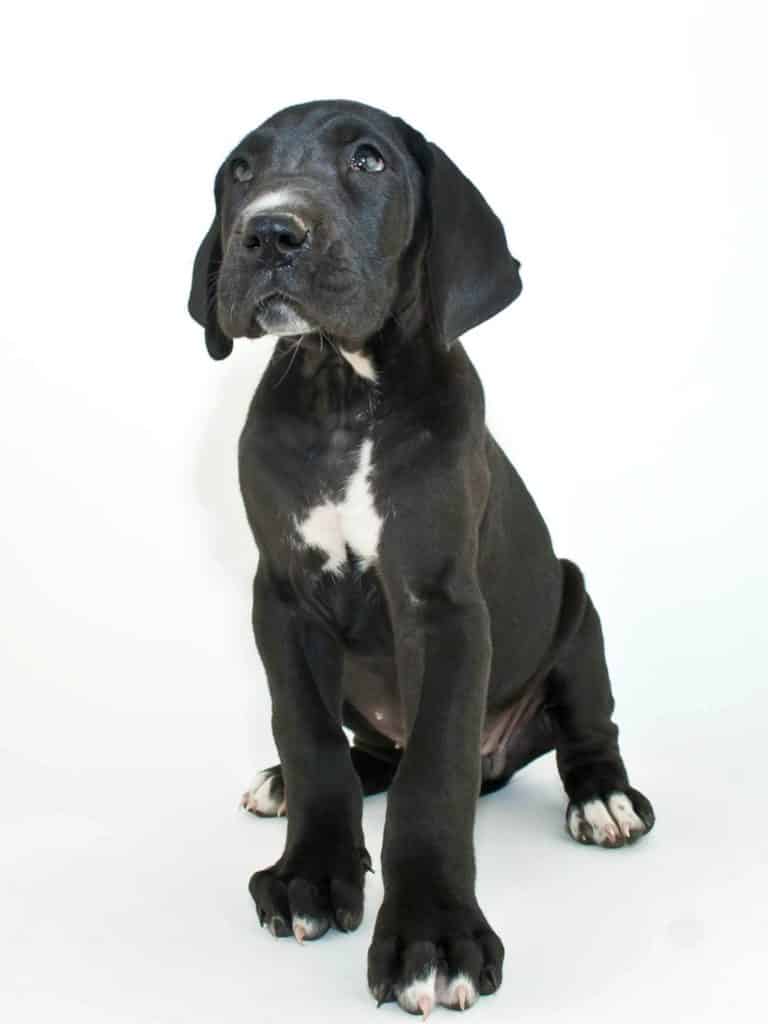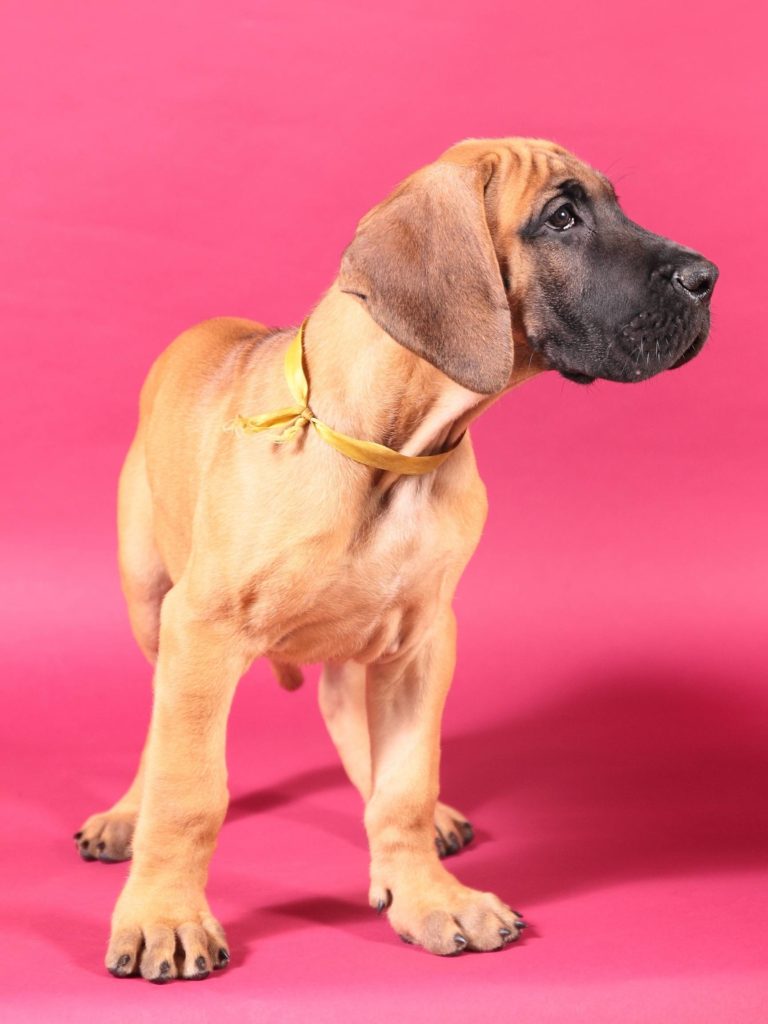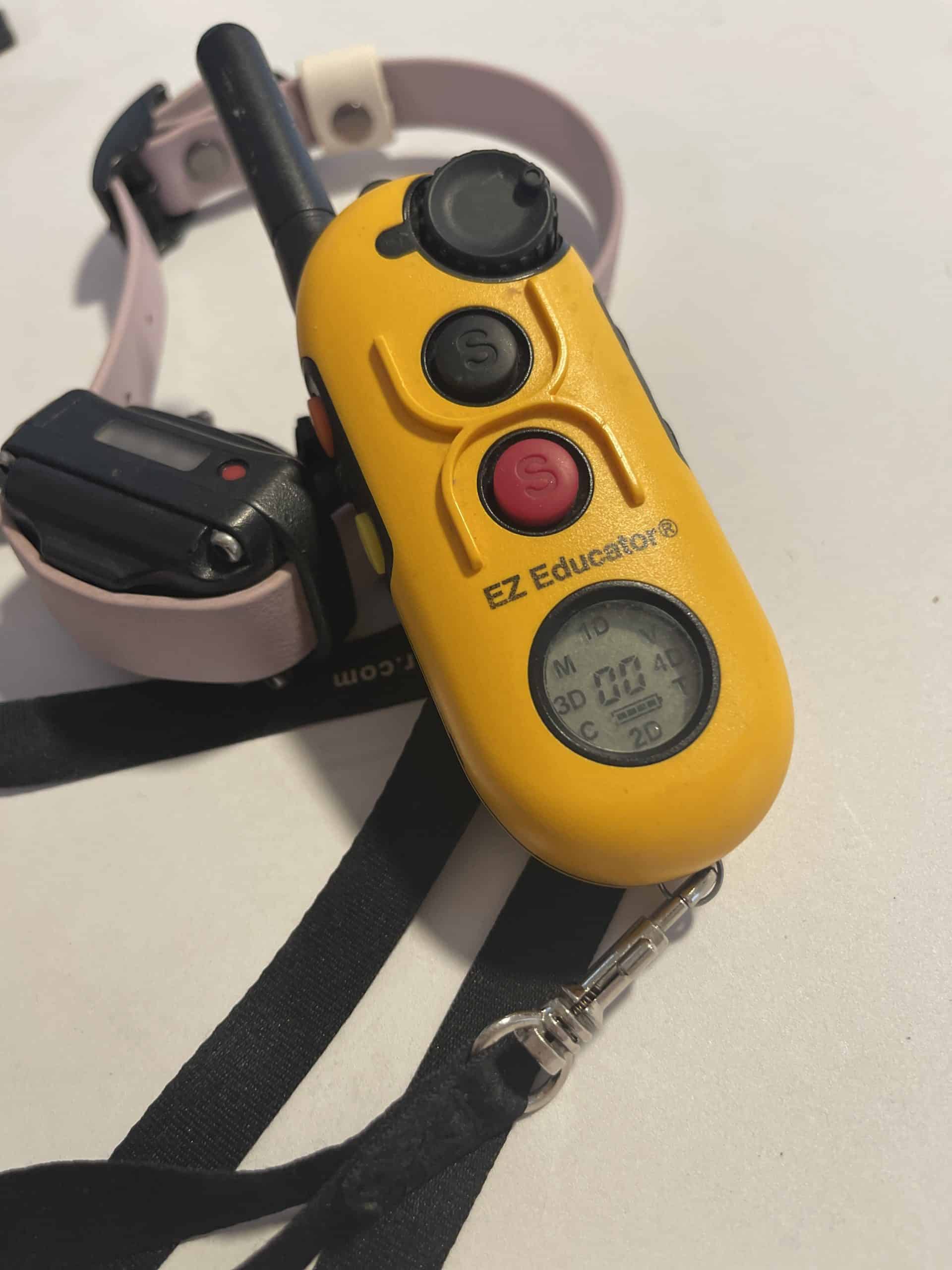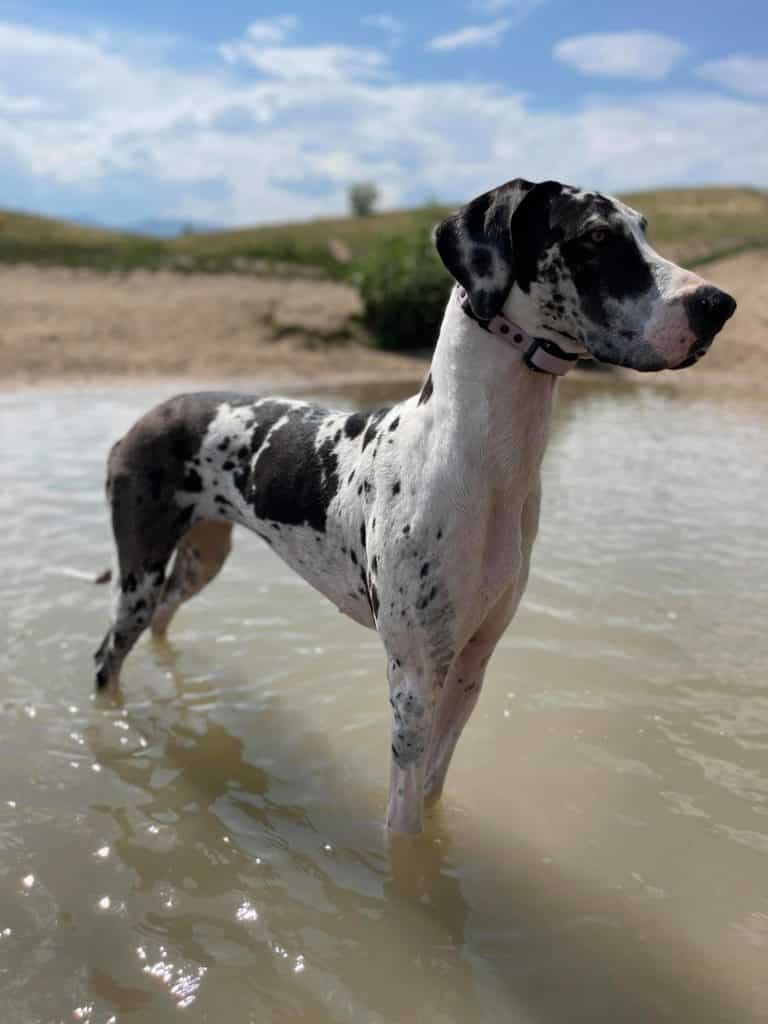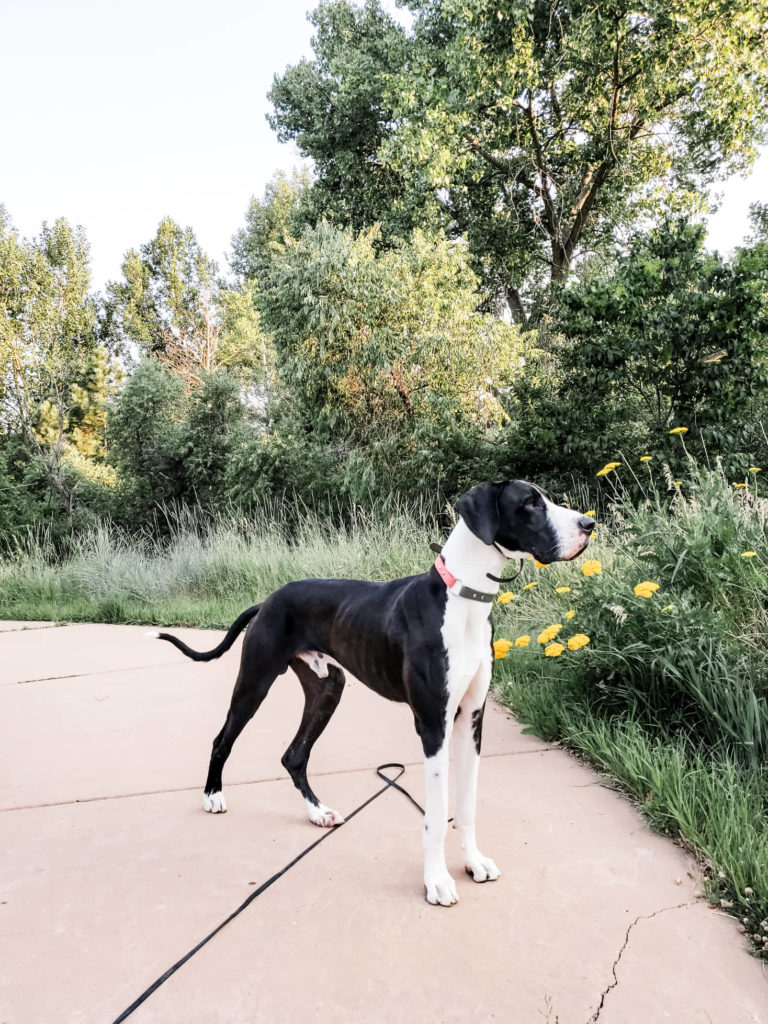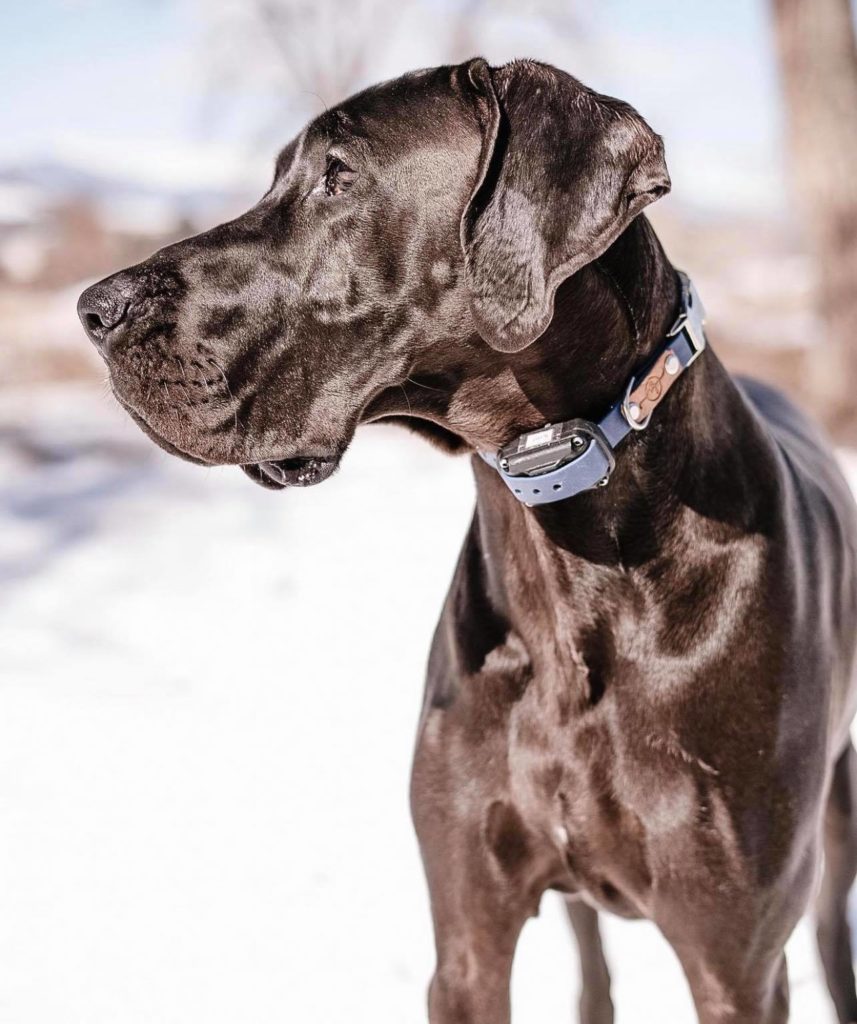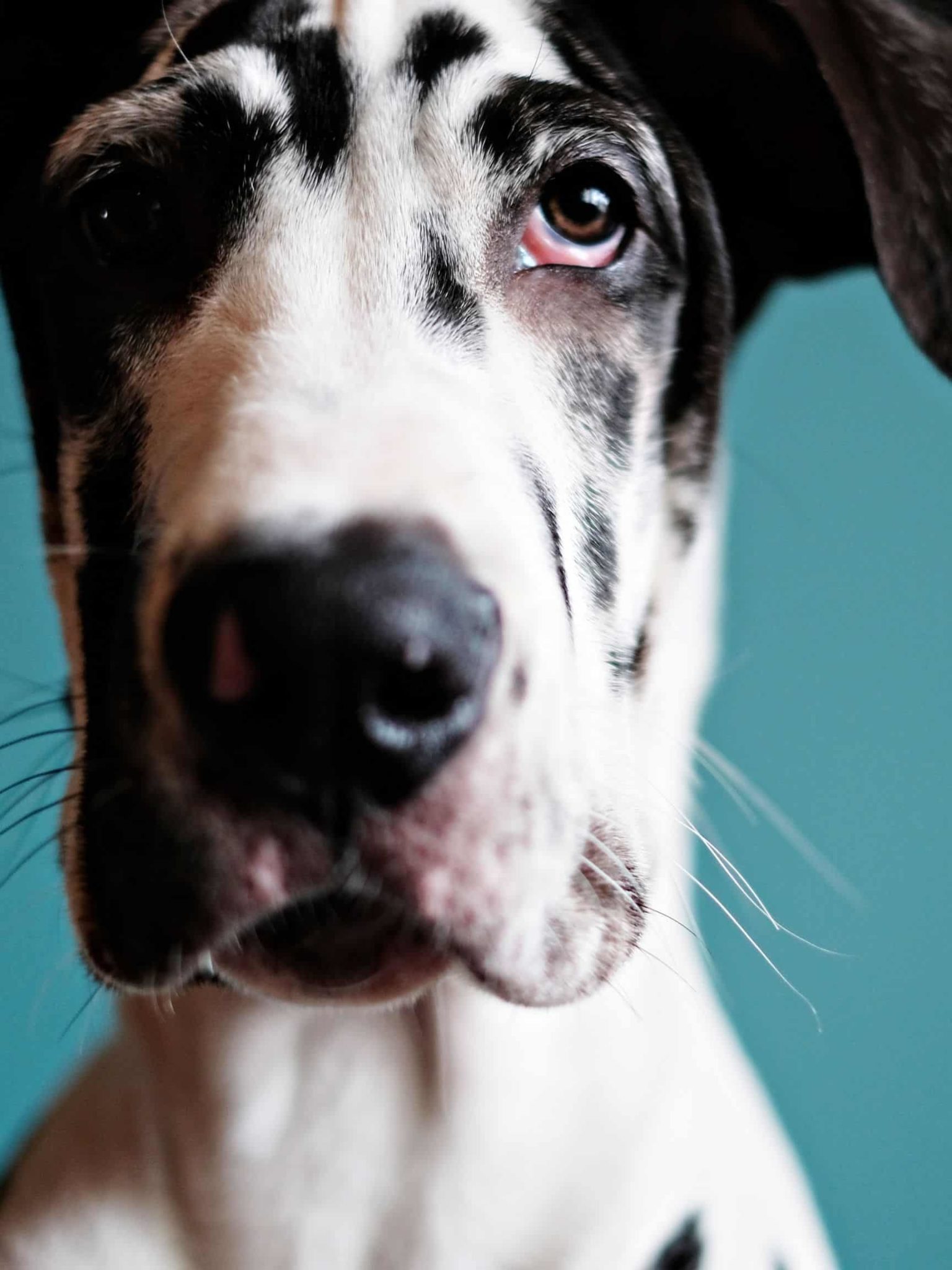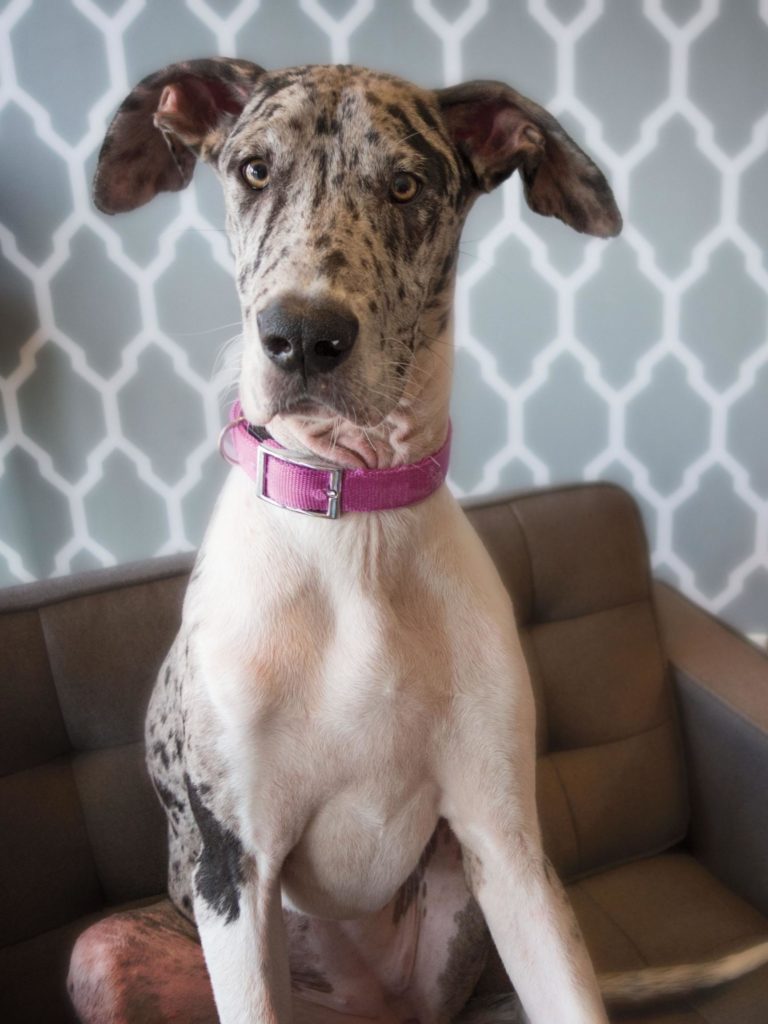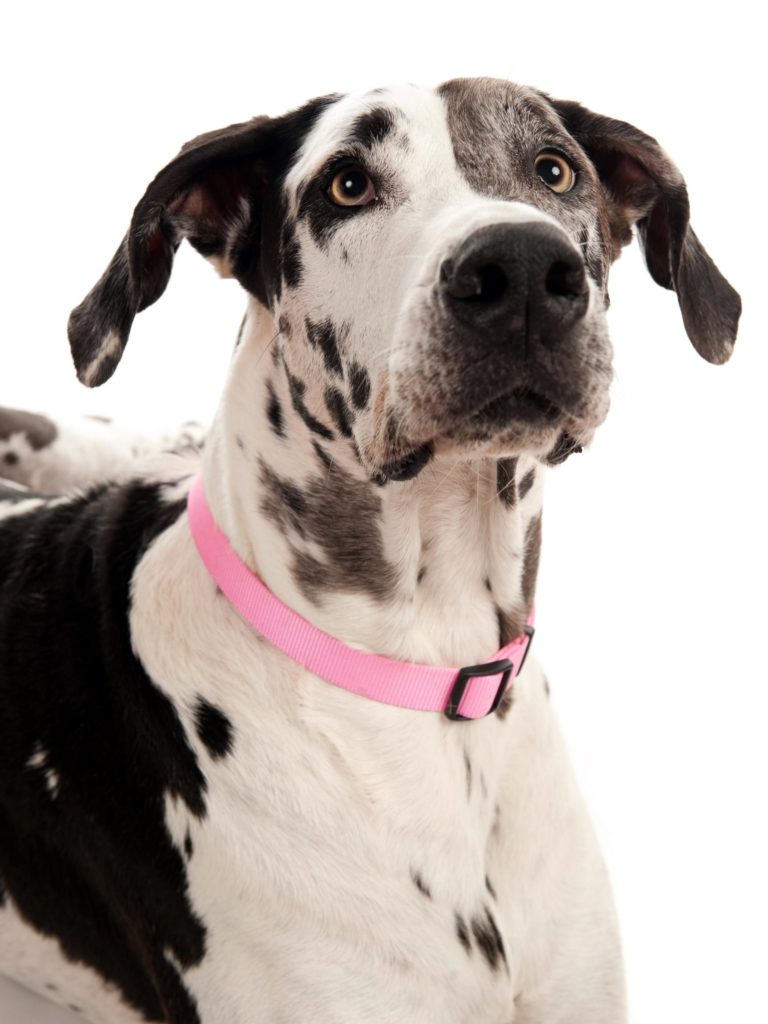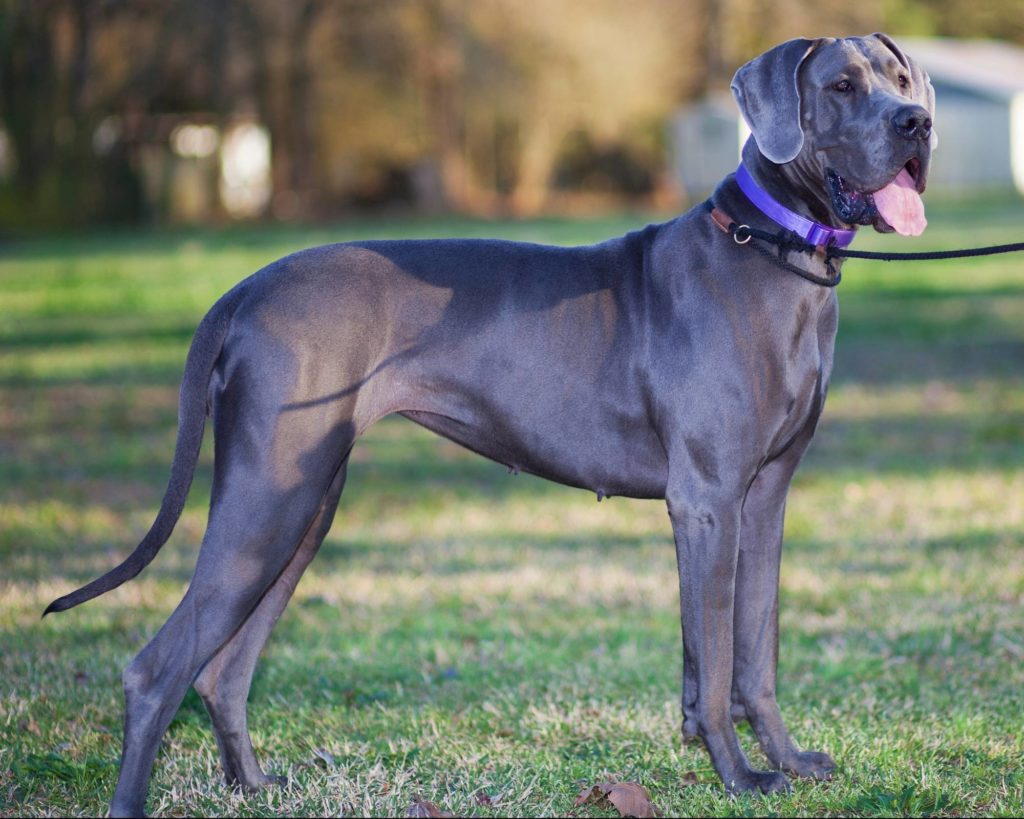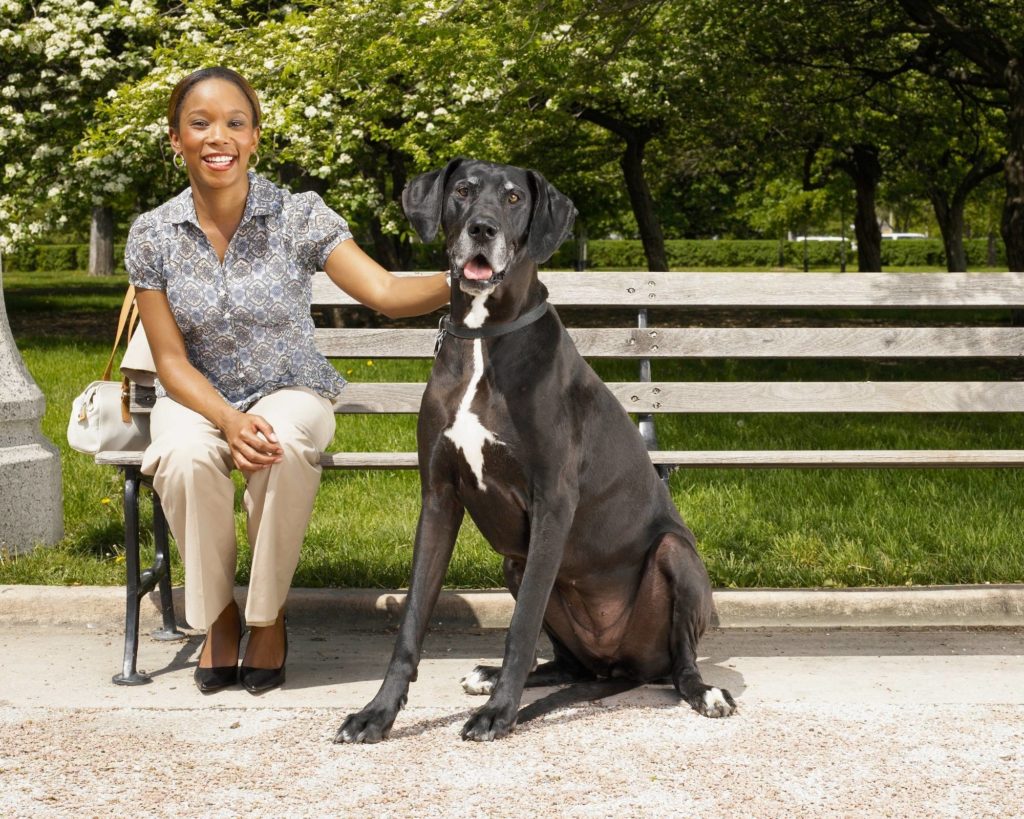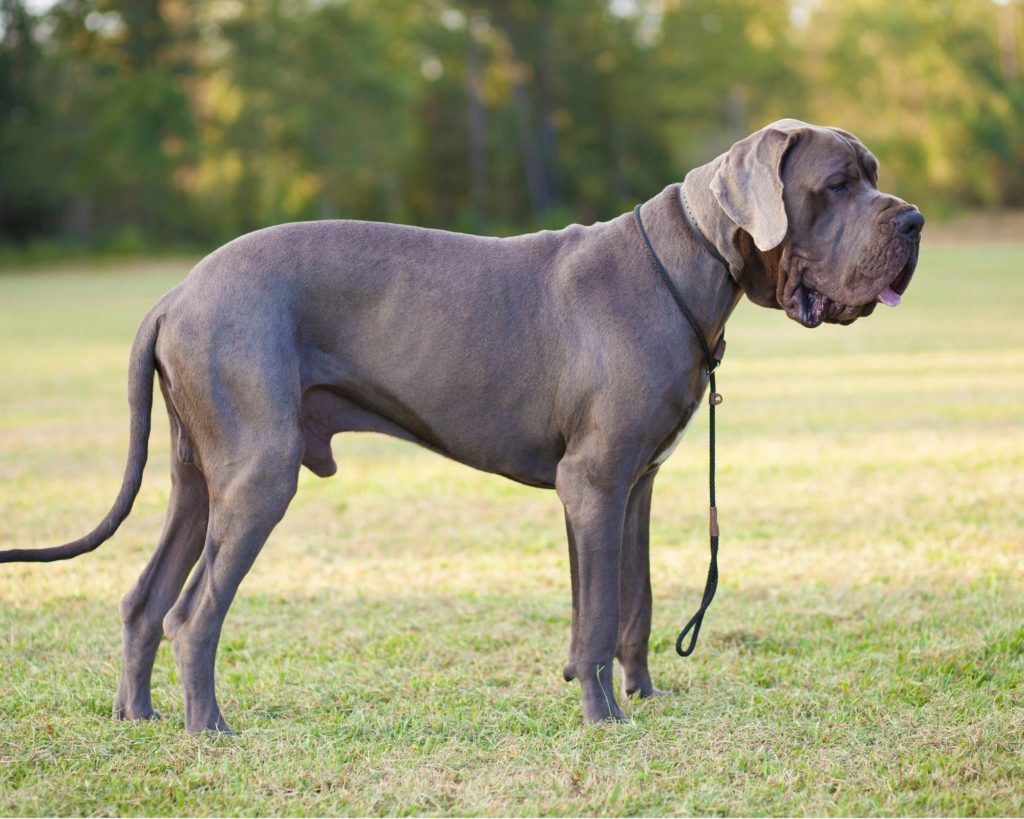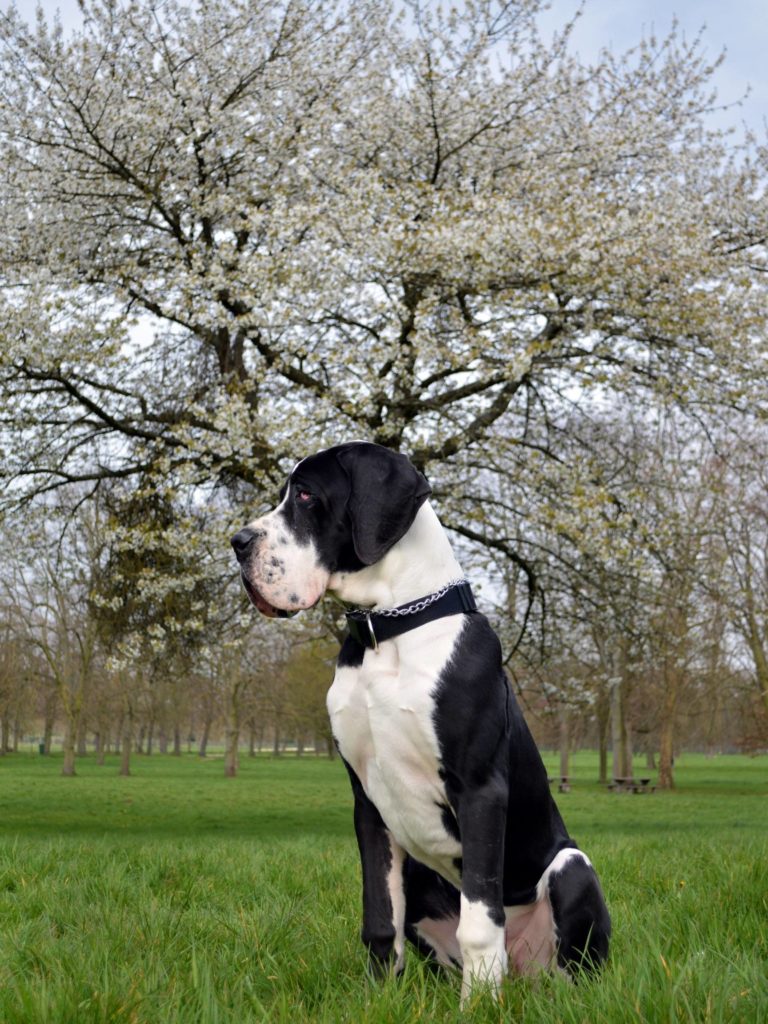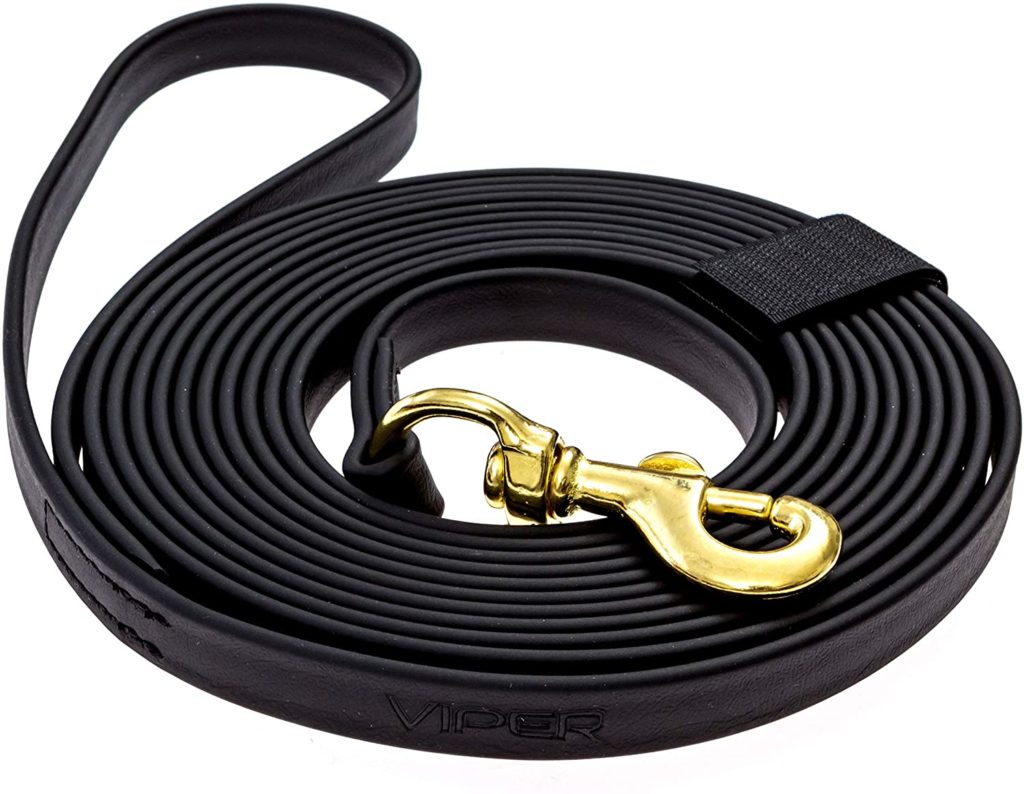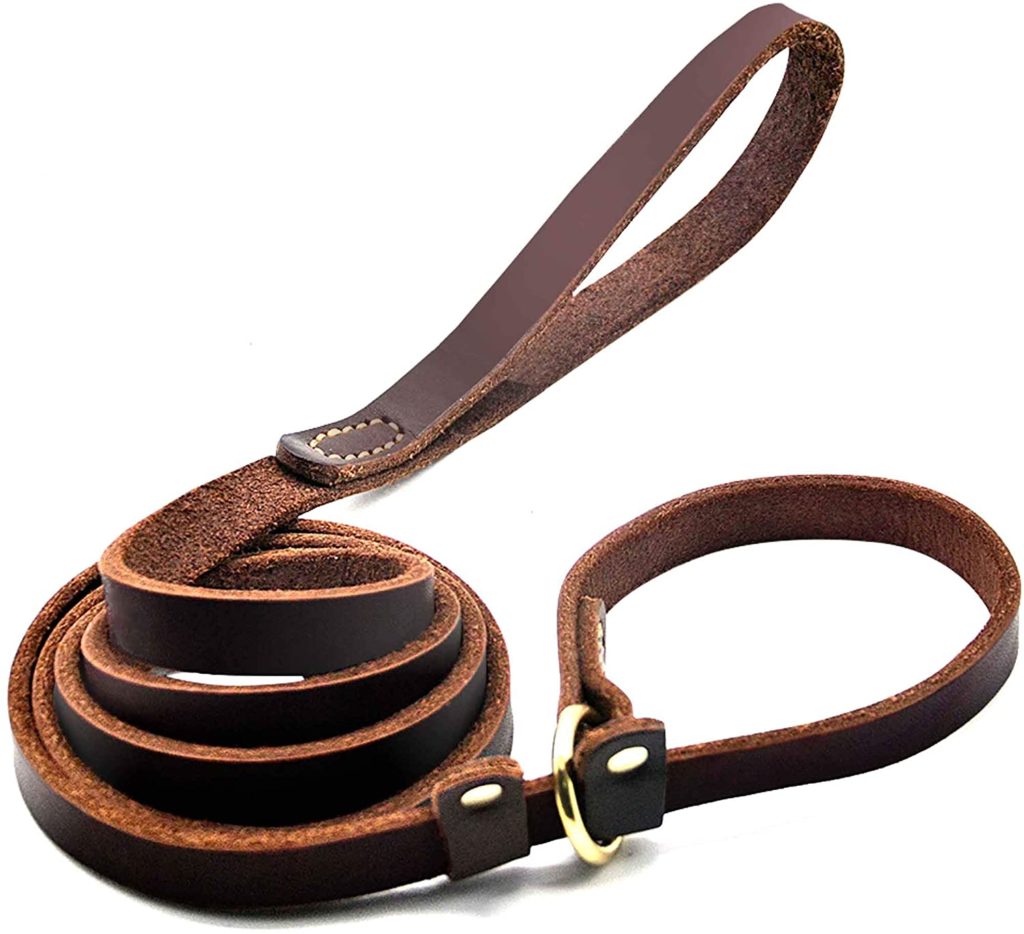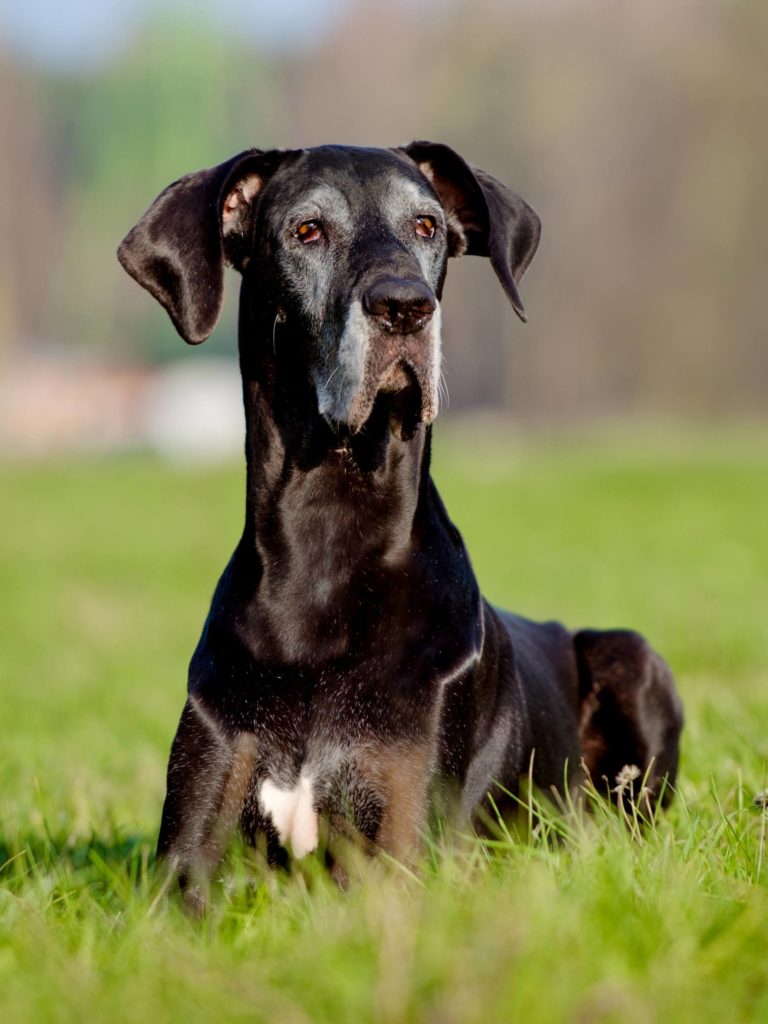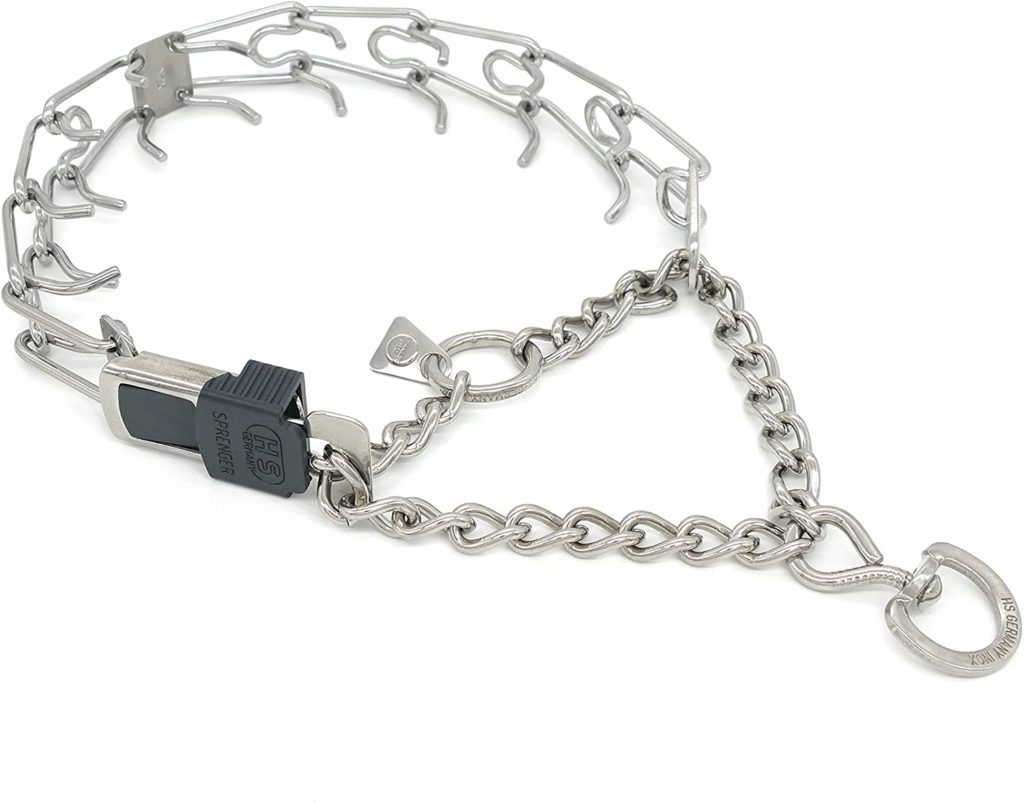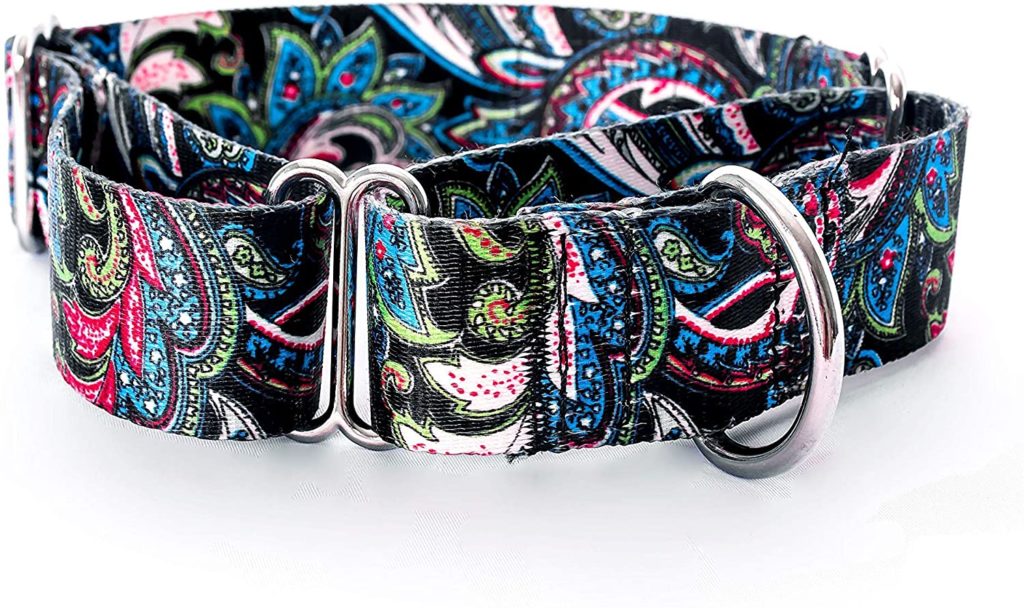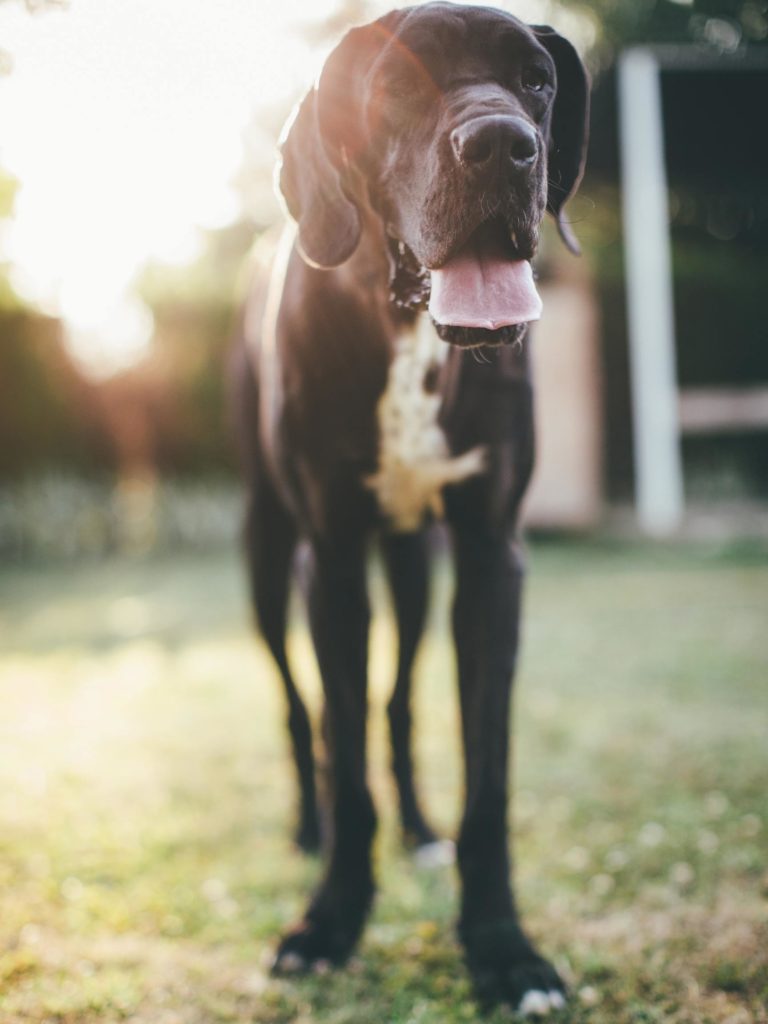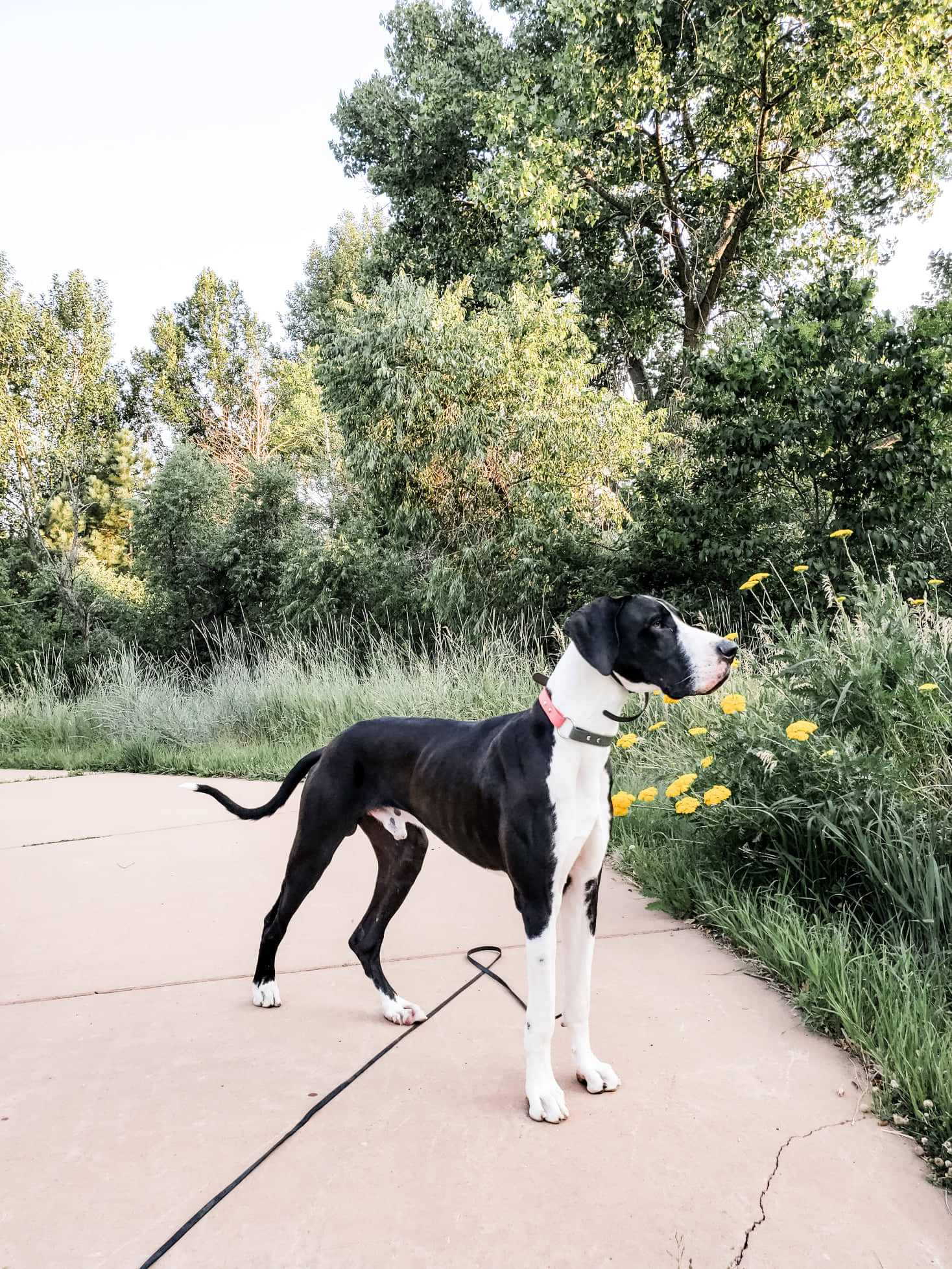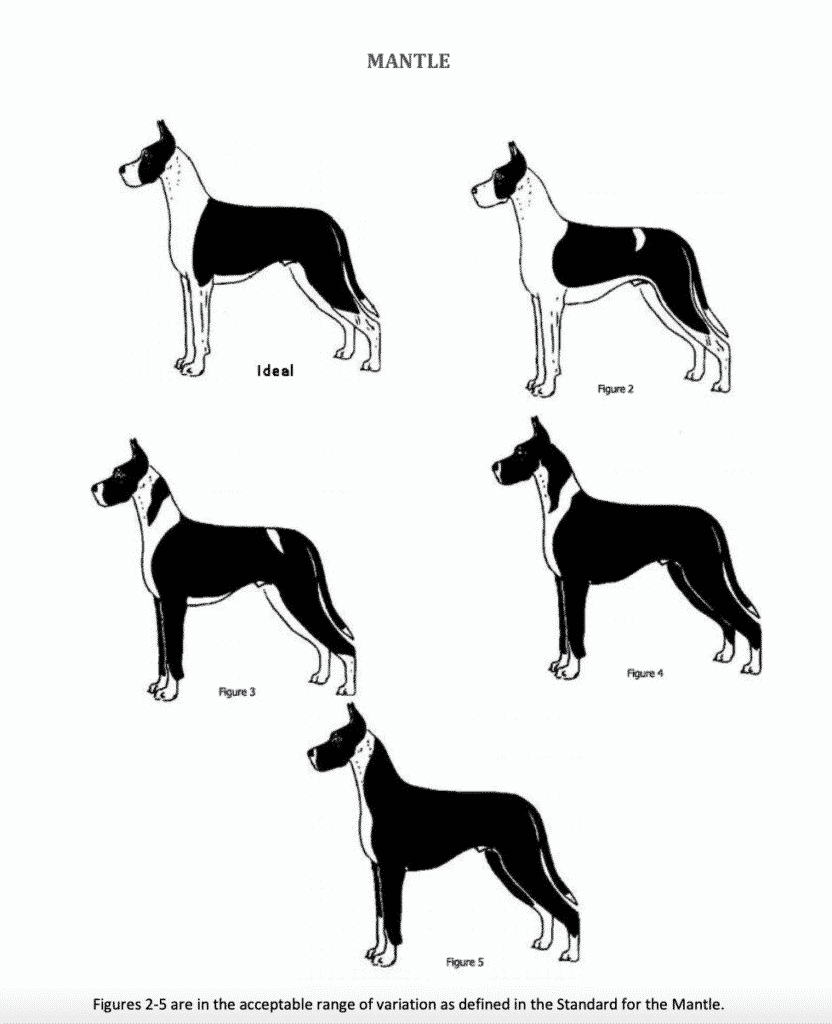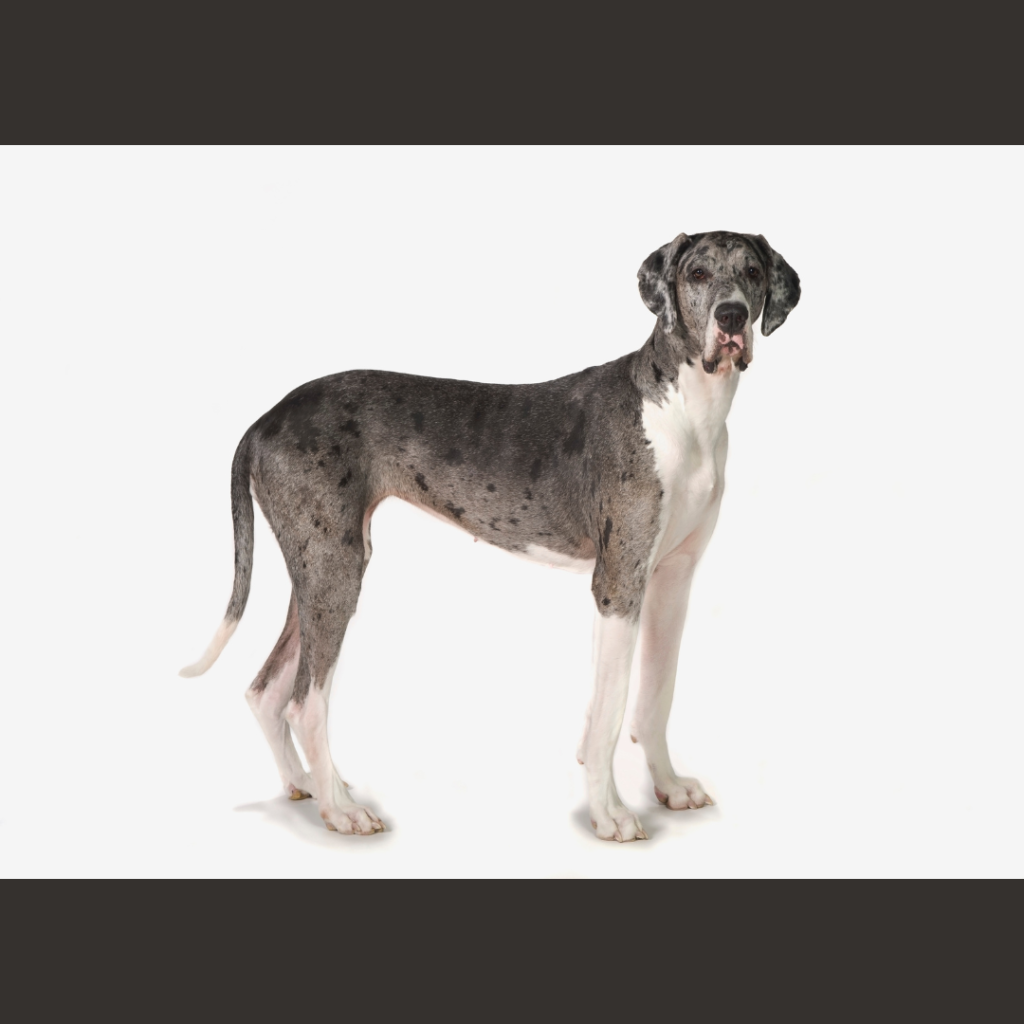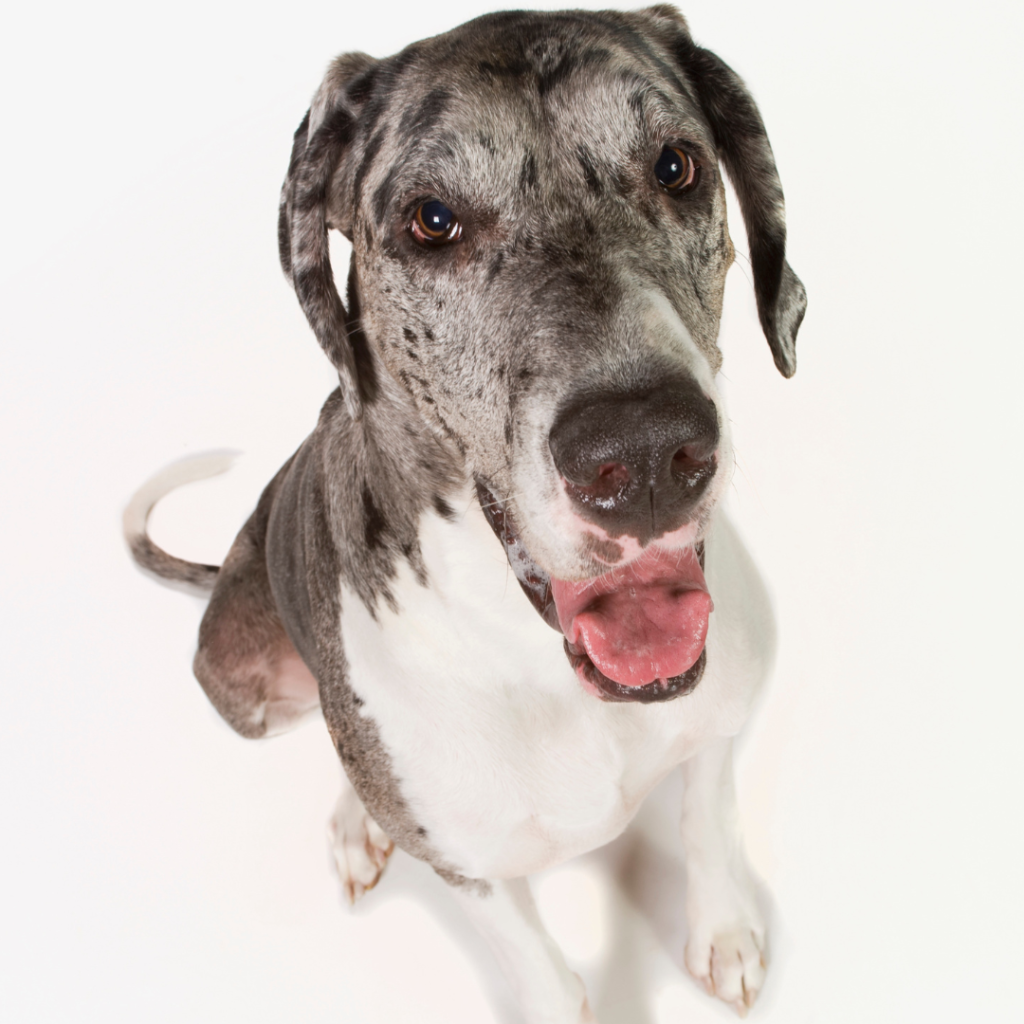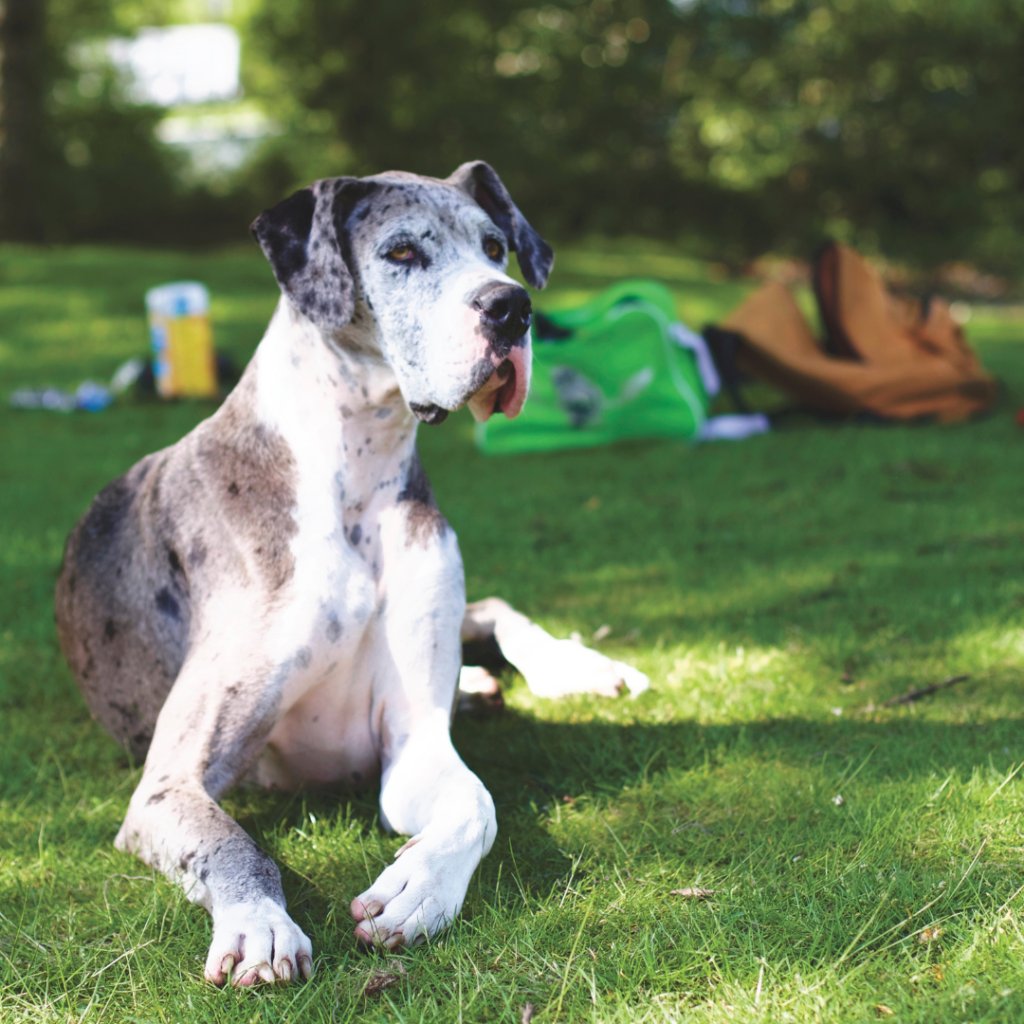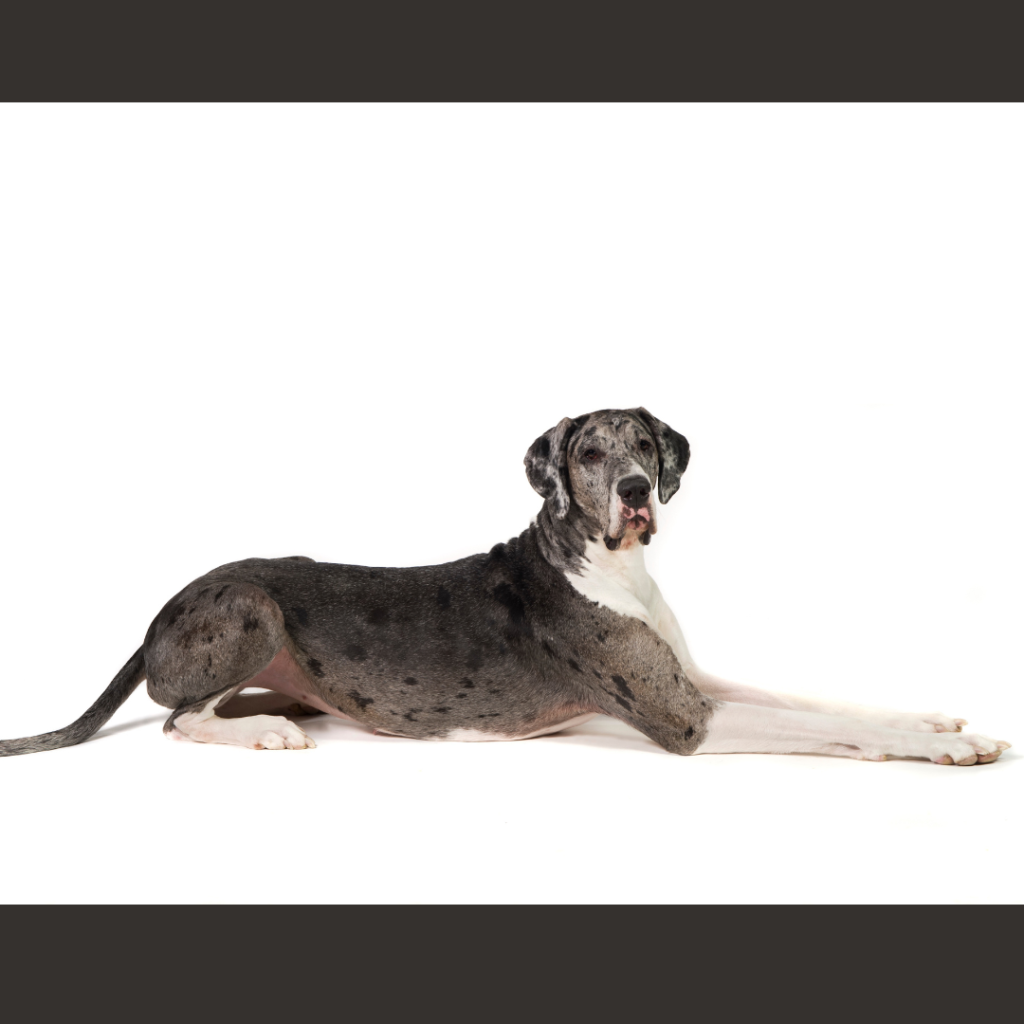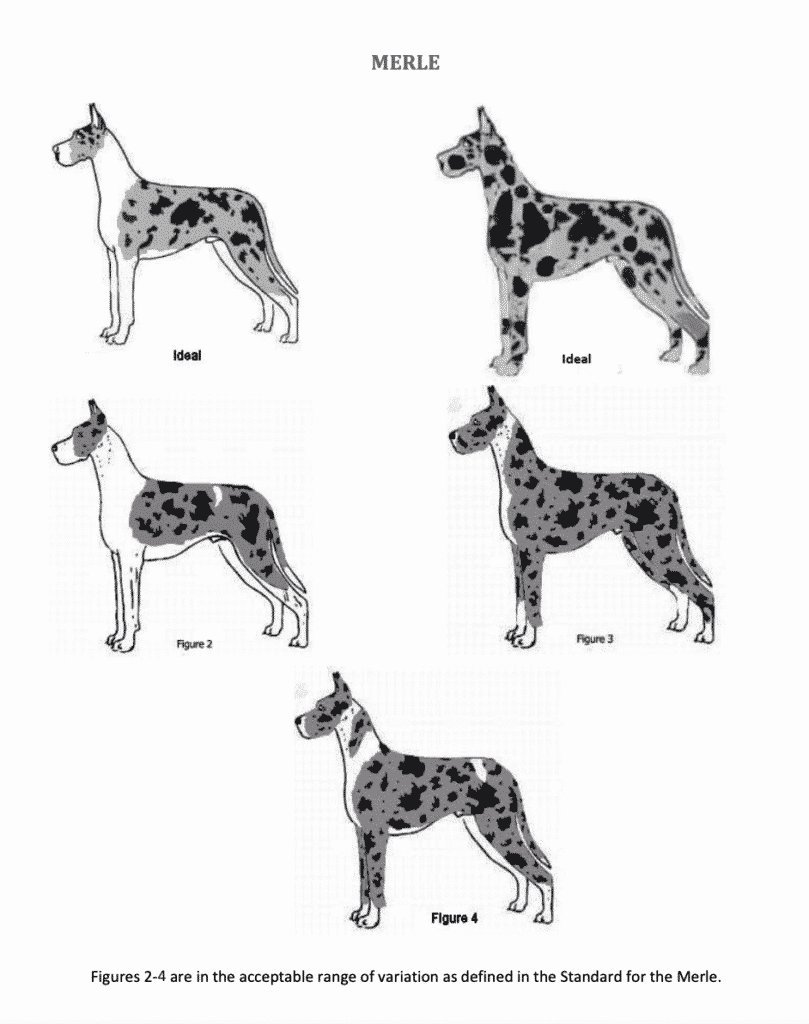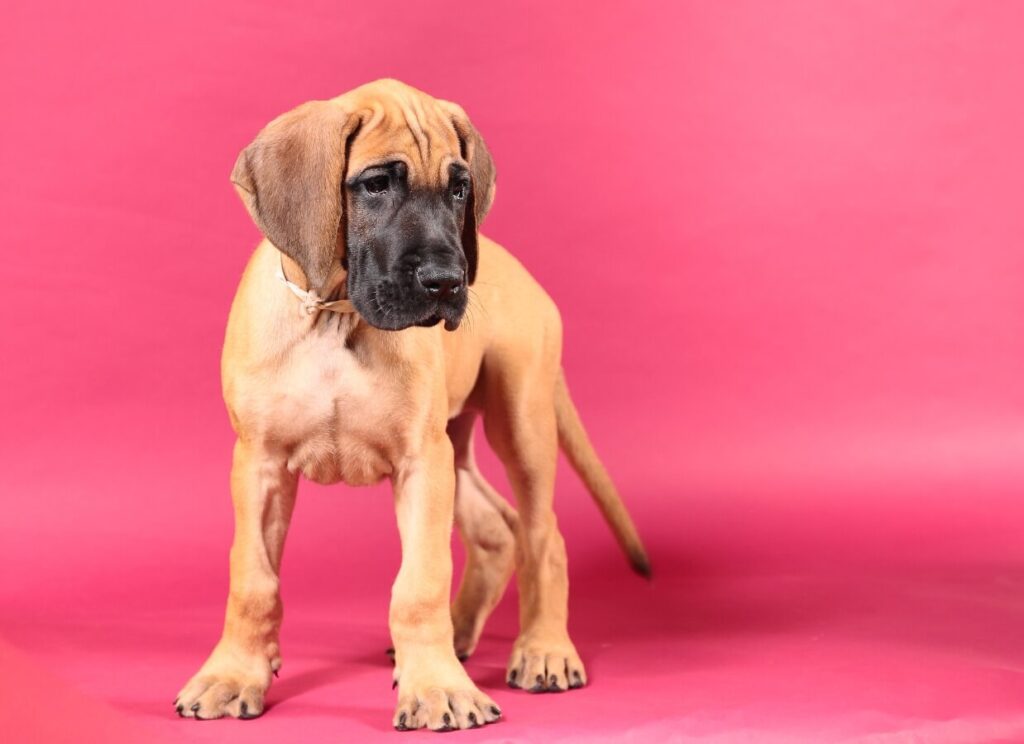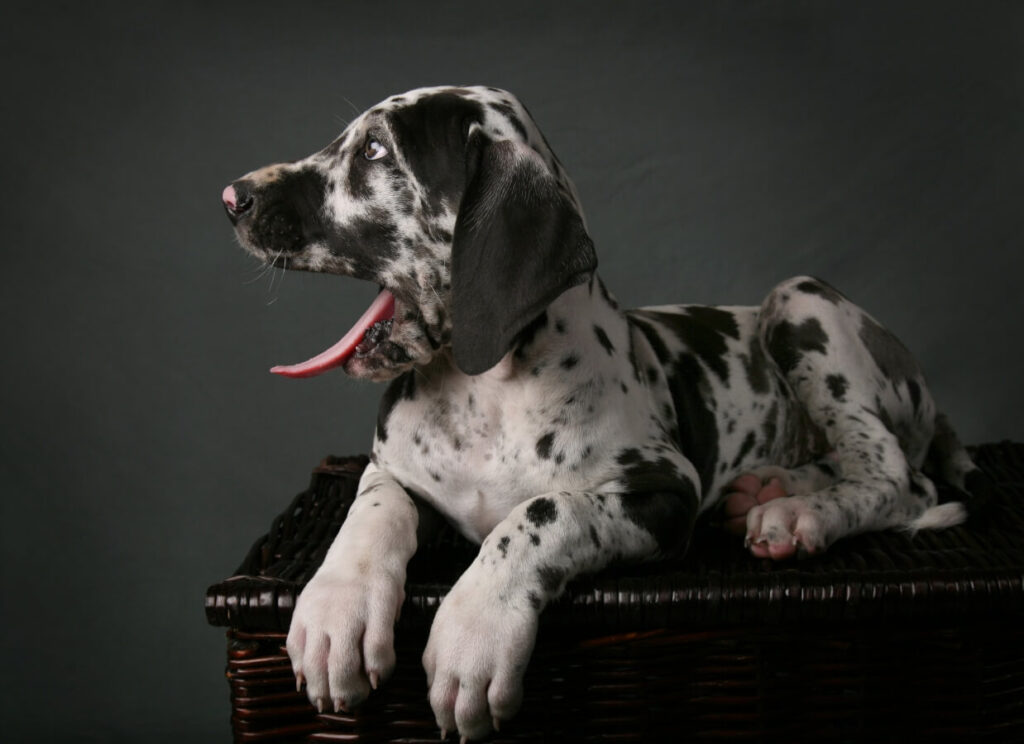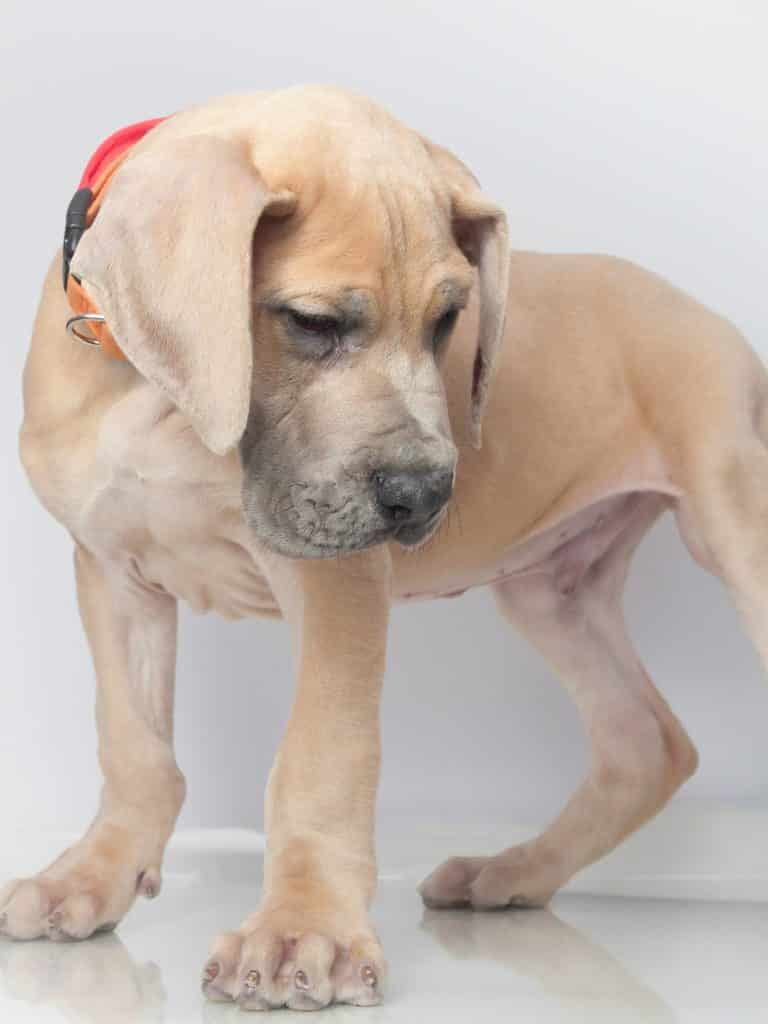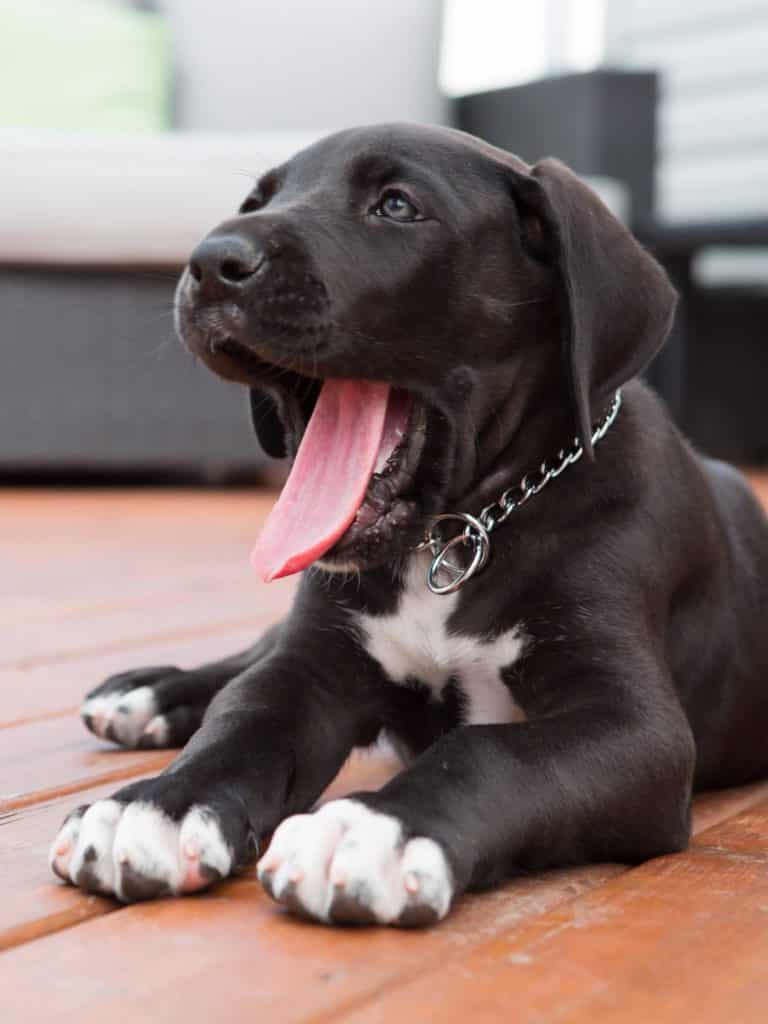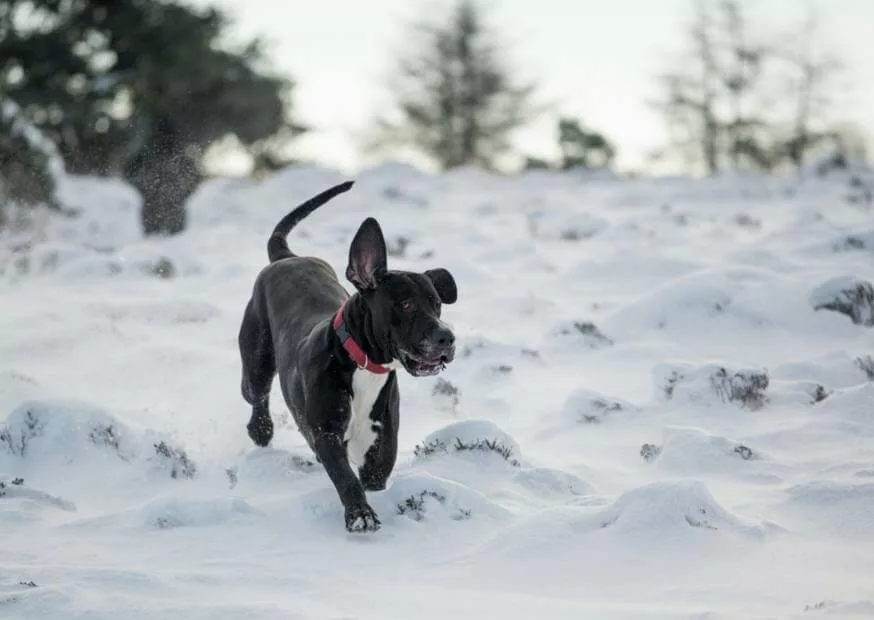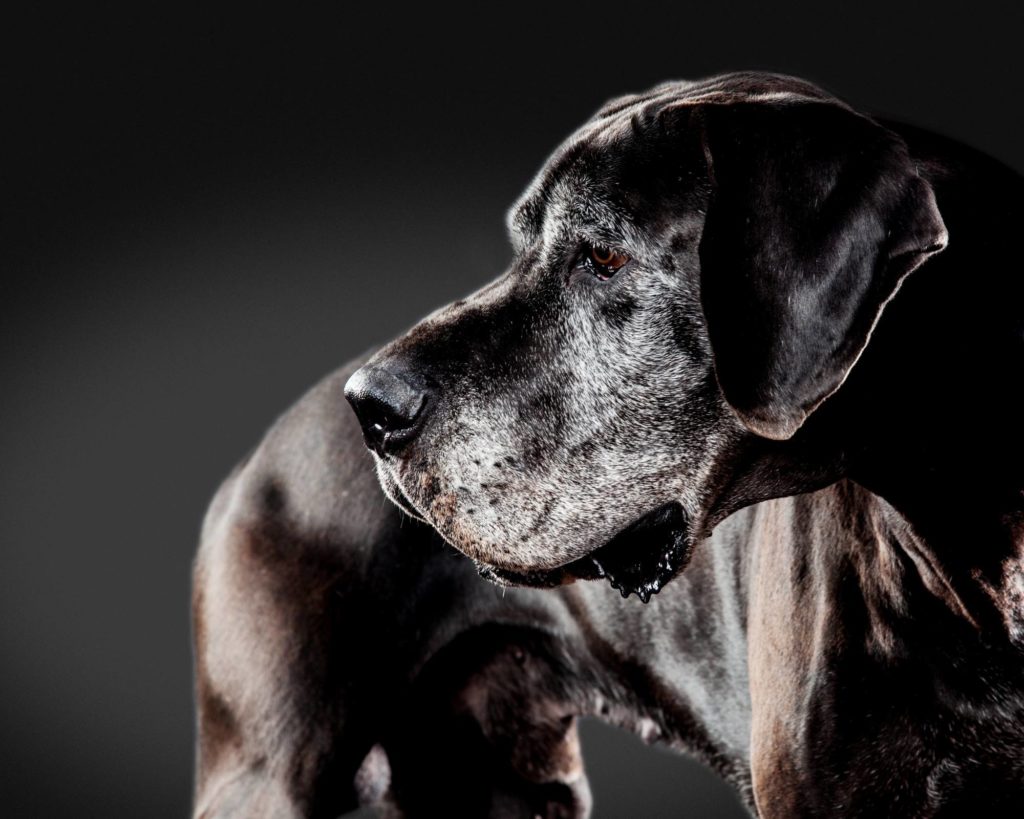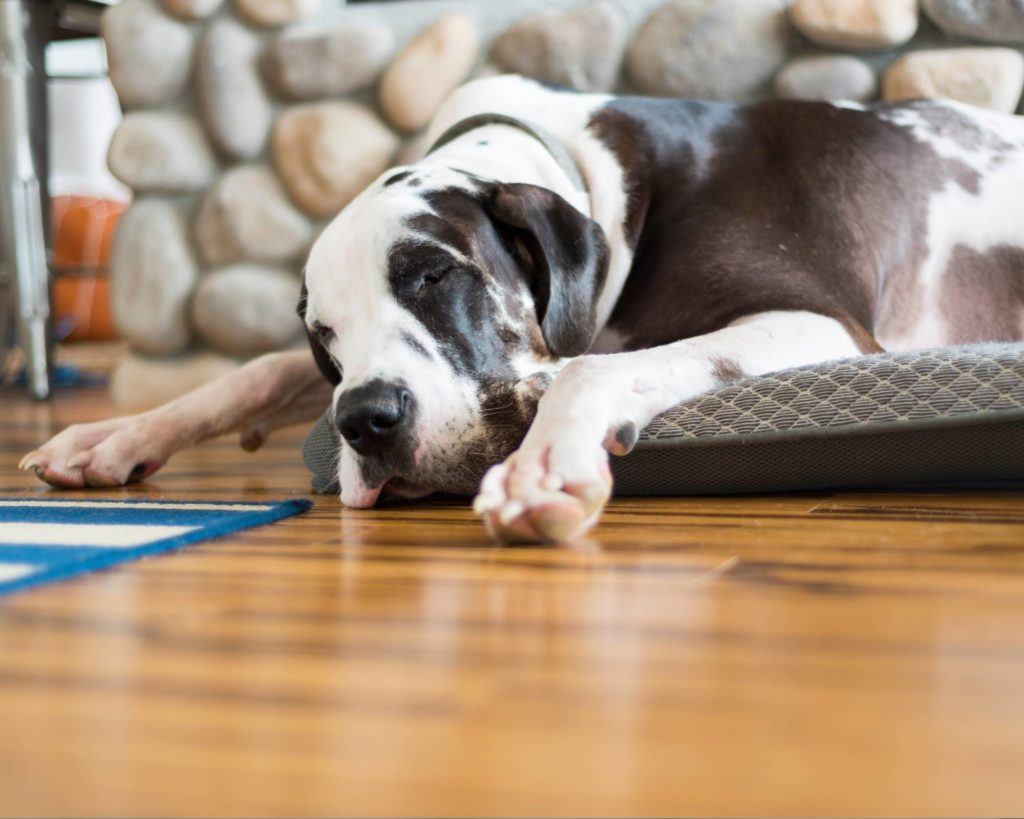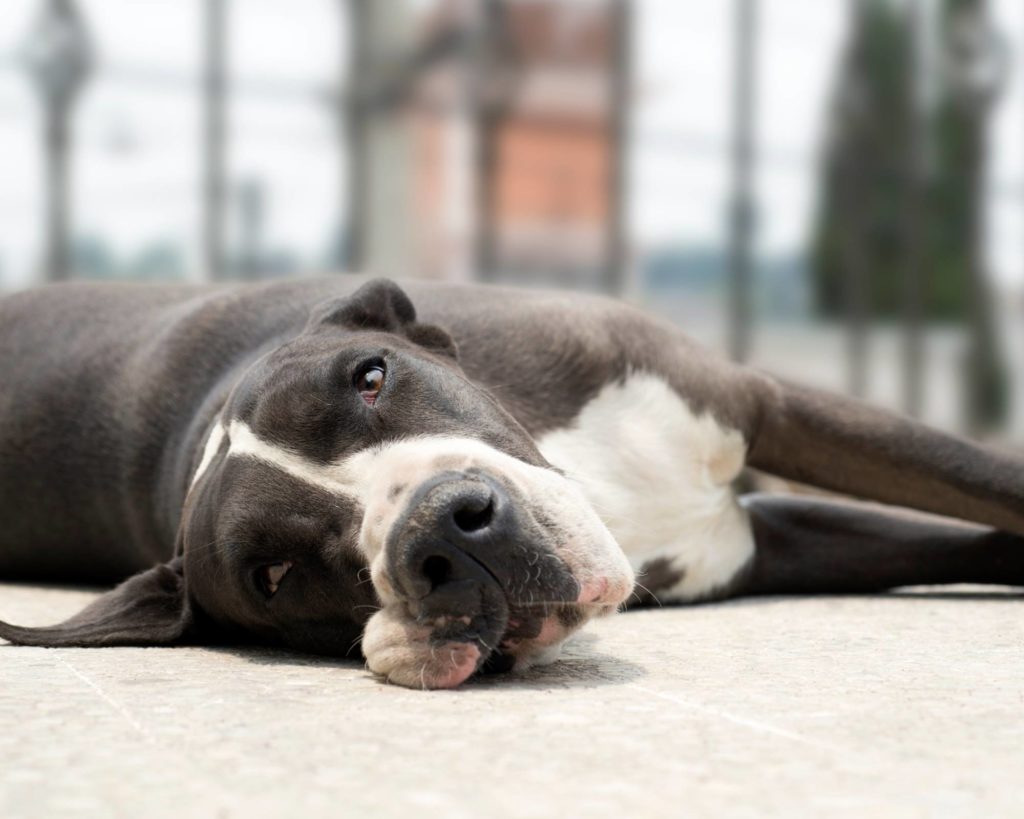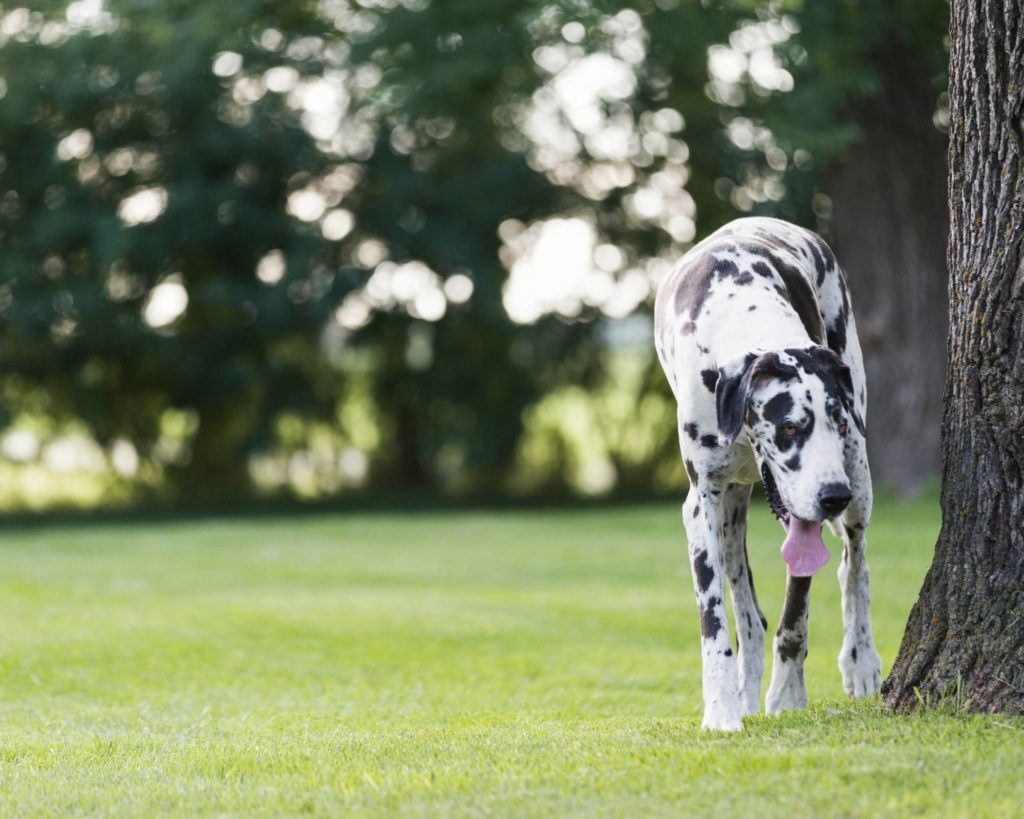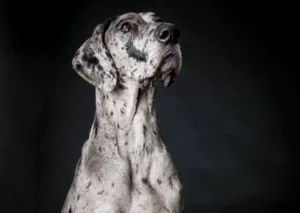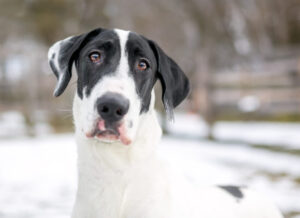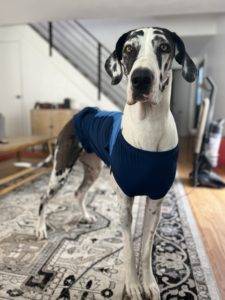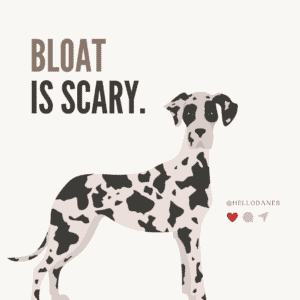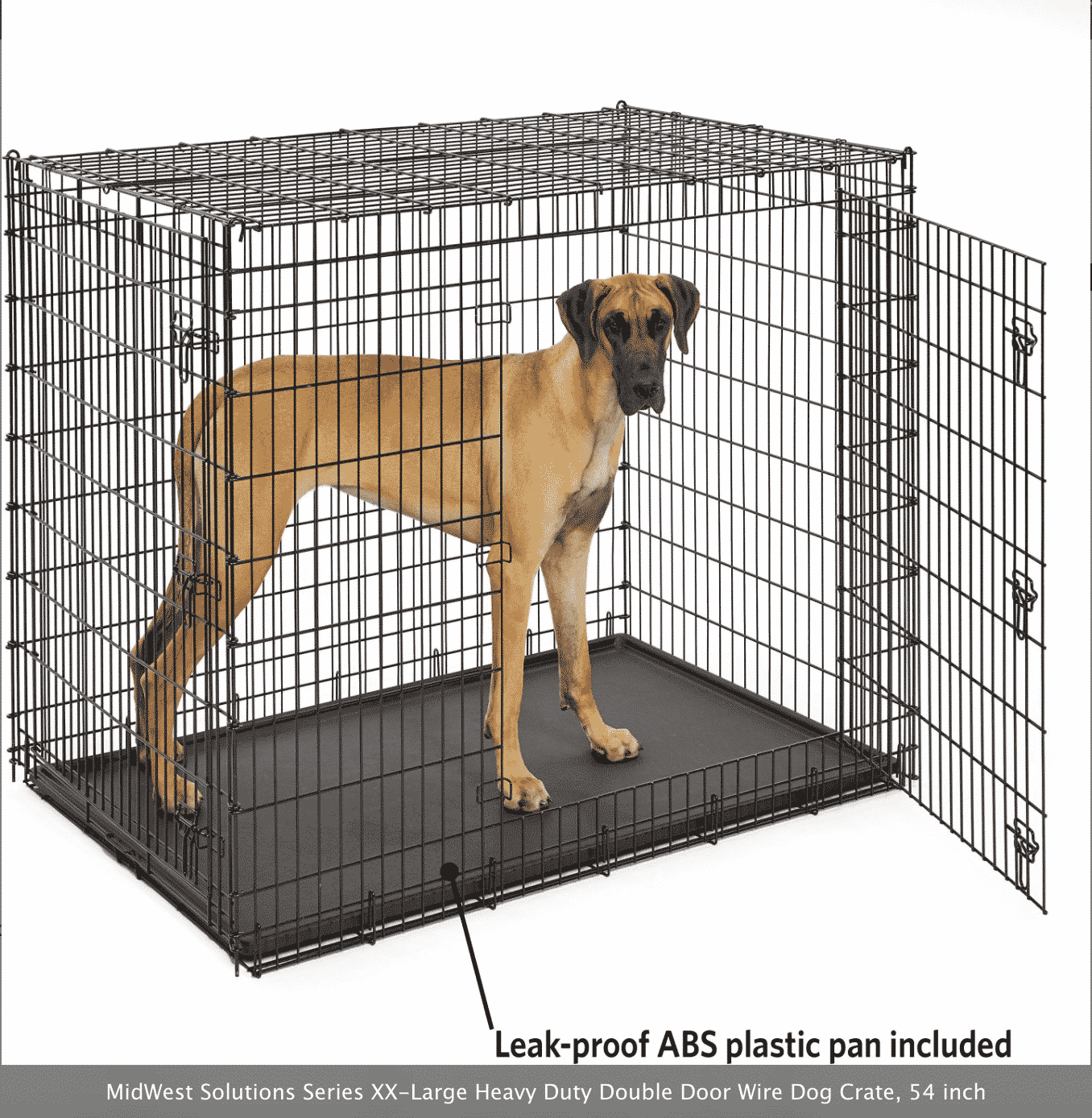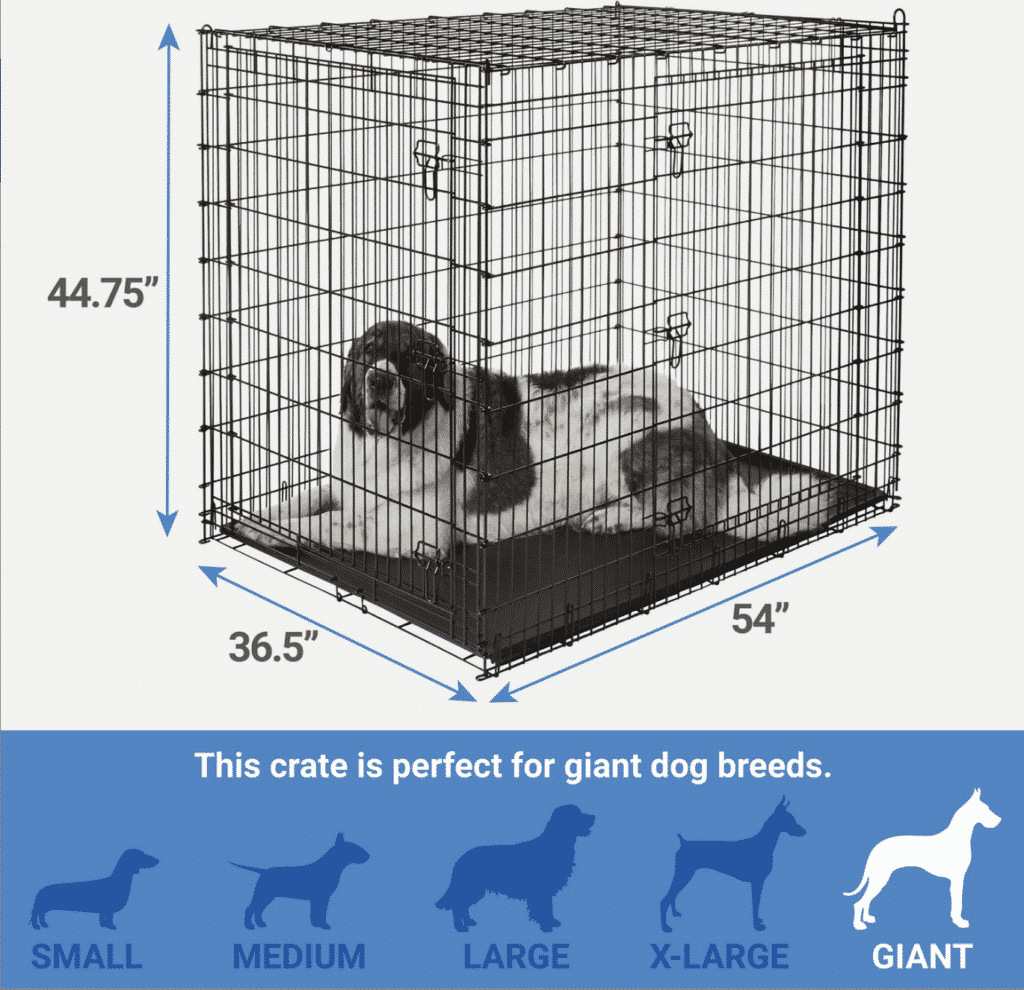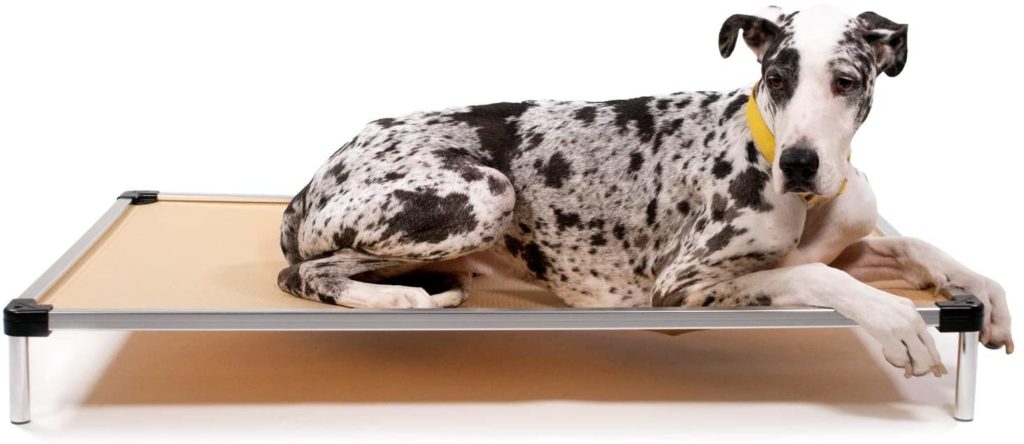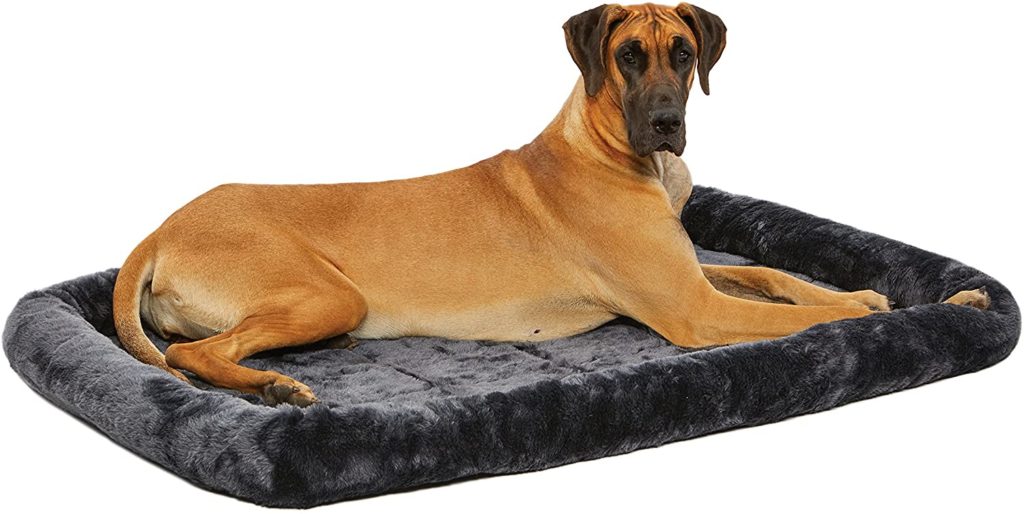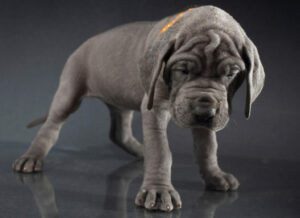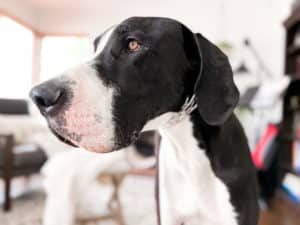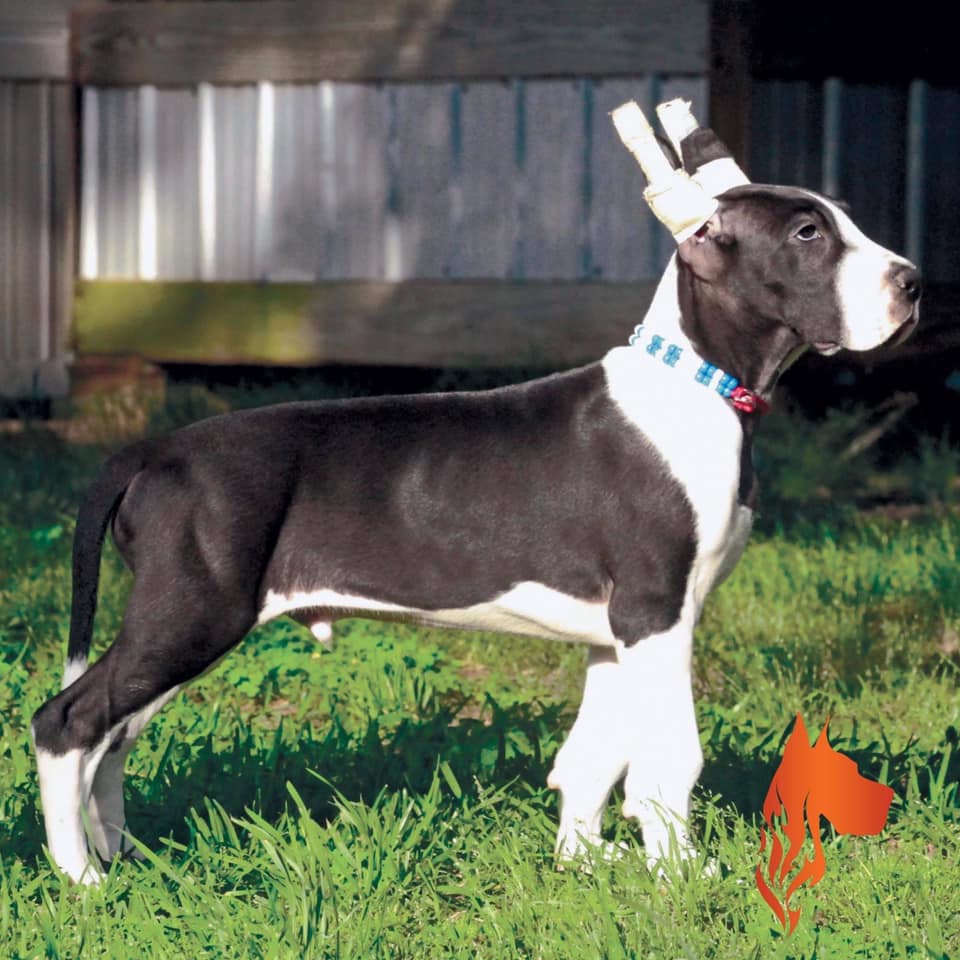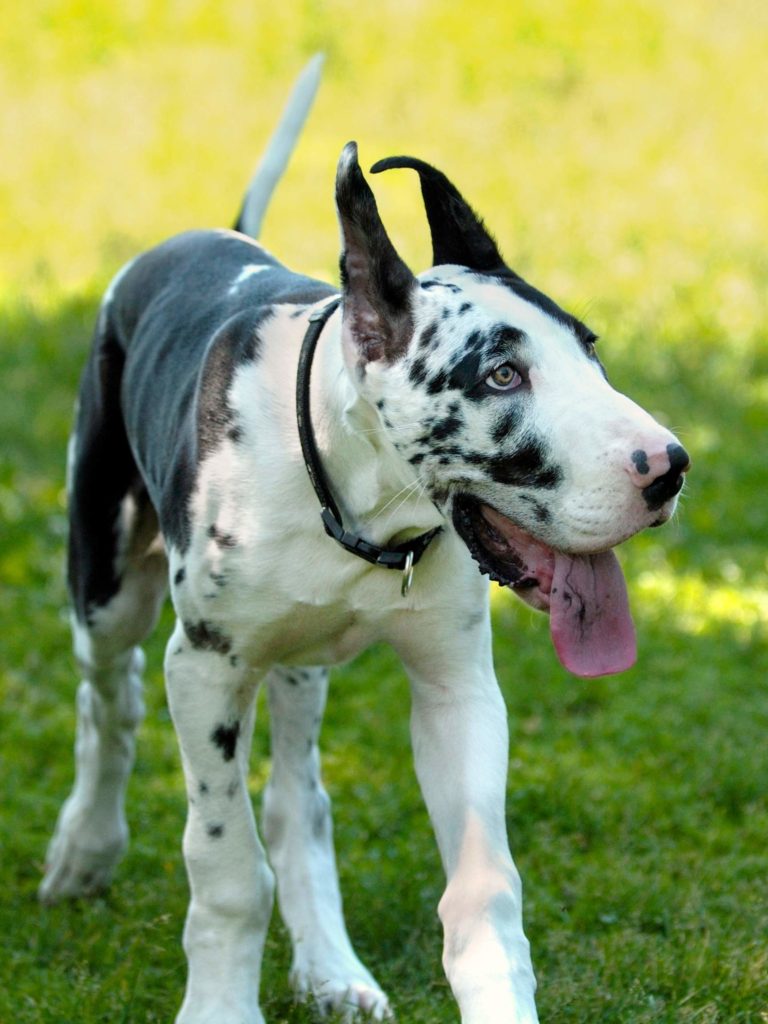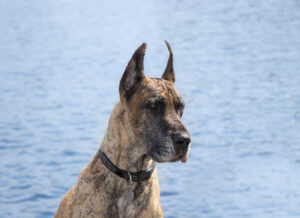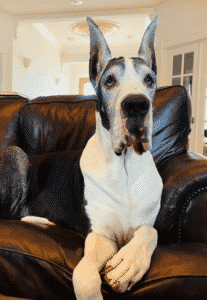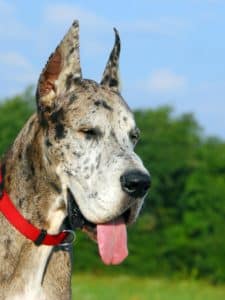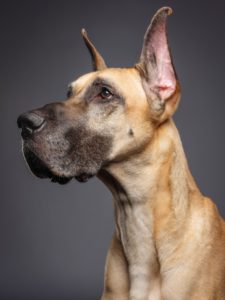Teaching a Great Dane E collar recall can be difficult, but it’s not impossible. In this dog training guide, we will discuss the best ways to provide recall for dog owners.
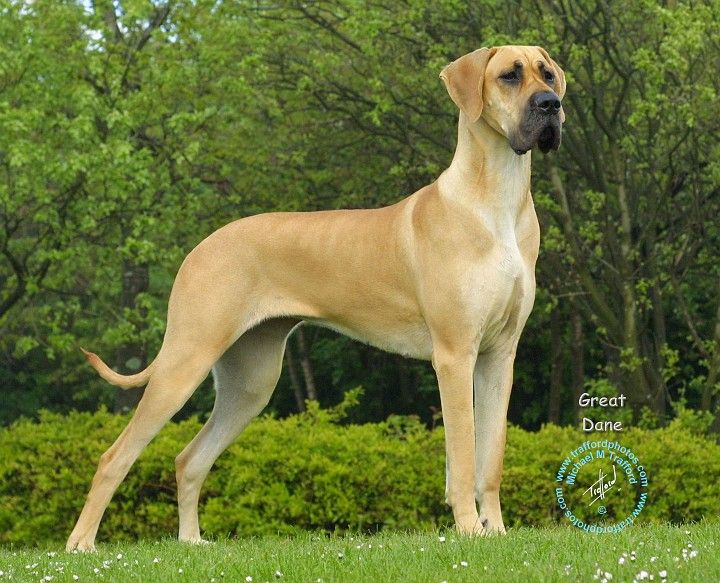
Read on to be able to provide your dog off leash freedom.
We’ll also cover how to use clicker training and positive reinforcement training. These skills are useful for the purpose of stopping the behavioral issues and getting reliable recall in your dog’s training. By following these tips, you can teach your giant breed dog recall with an e collar with this highly recommended training method.

Before Teaching Recall with an E Collar You Need Foundational Skills
It is highly recommend that you practice foundational training skills before teaching recall with a training collar. Teaching recall with an e collar is NOT a basic skill. Work on foundational skills first. These skills include: training on a flat collar/gentle leader, loose leash skills, and helping your dog to stop pulling on the leash. Your Great Dane should master basic skills before you begin teaching recall with an e collar.
Again, is crucial to teach basic skills before beginning to teach your Great Dane any type of recall.
It is important that every dog owner teach these basic skills. Foundational learning happens before beginning to teach your Great Dane Recall with an E collar.
You can work with a professional trainer to establish how to use these collars on big dogs. Also ask them to help maintain control over their off leash recall. Teaching recall with an e collar sometimes requires professional help, depending on your comfort level.
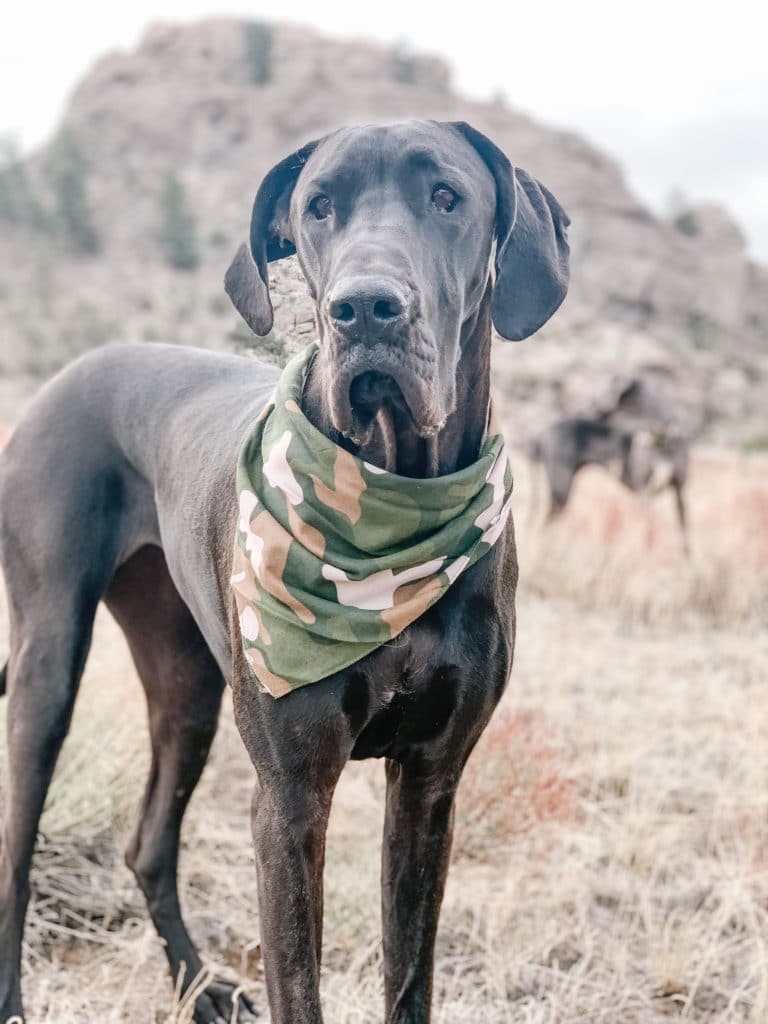
Different Methods of Teaching Skills Necessary Prior to Training Recall with an E Collar
Remember that it is important that your dog is trained prior to beginning training recall with an e collar. We put together a short list of a few methods in which you can help your dog learn foundational skills.
Clicker Training
Clicker training is a type of positive reinforcement training that uses a clicker tool to mark desired behaviors. The sound of the clicker tells the dog that they have done something right and that they will be rewarded with a treat.
5 Leash Training Tips
Puppy Training: 5 Mistakes in Training
What is Balanced Training?
What is Great Dane Dominance Training?
Clicker training is a very fast and effective way to train dogs, and it can be used for basic obedience commands or more complex behaviors. Clicker training is a great way to build a positive relationship with your dog while teaching them new things!
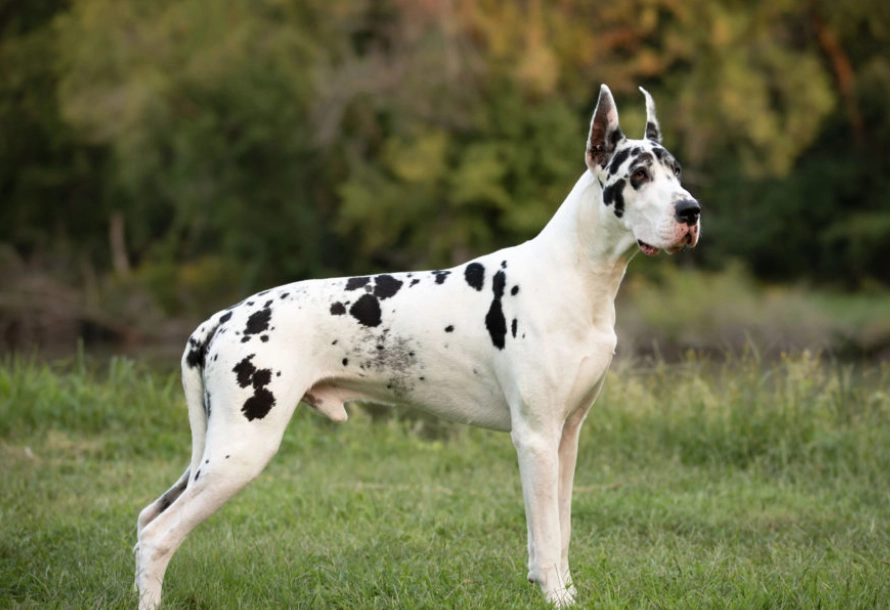
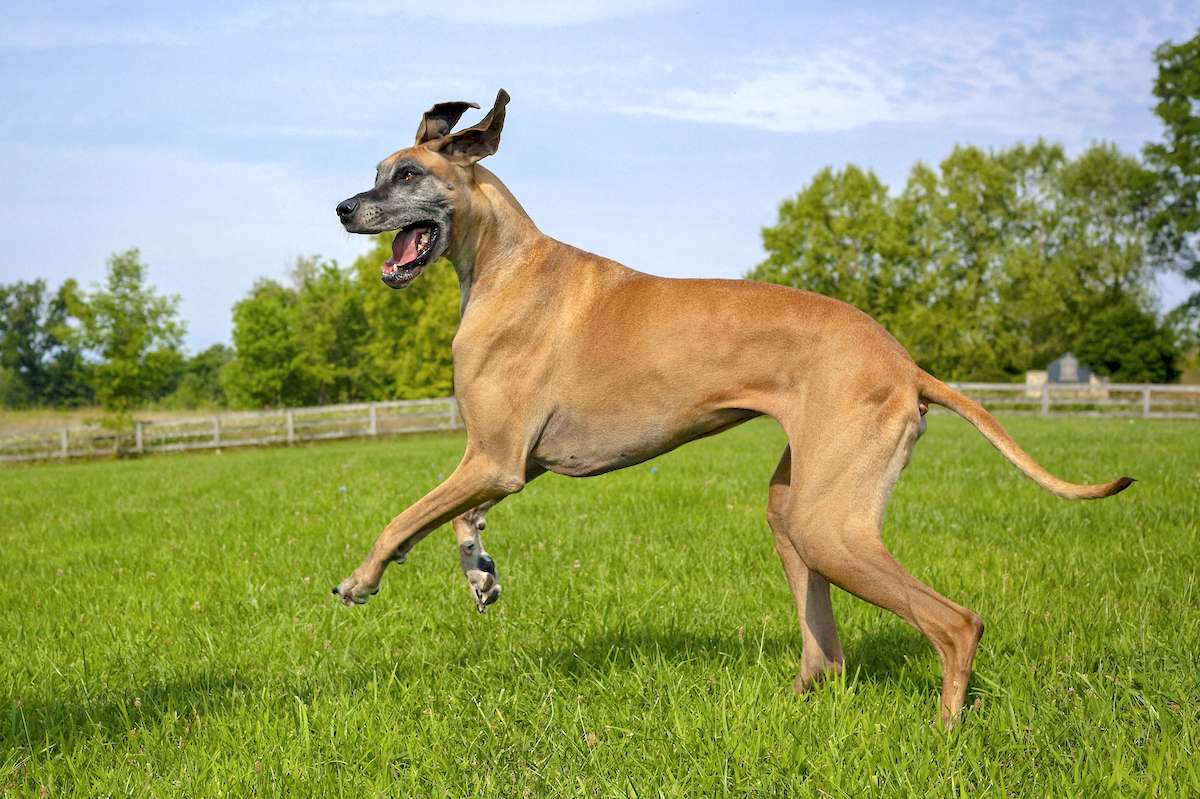
One of the great things about clicker training is that it is very easy to get started. All you need is a clicker tool and some tasty treats that your dog loves. You will also need to find a quiet place to train where there are no distractions. Once you have all of your supplies, you can start training your dog!
To begin, you will want to click the clicker tool and immediately give your dog a treat. Do this several times so that your dog associates the sound of the clicker with getting a treat.


Next, you will want to start teaching your dog some basic obedience commands. For example, you can start with the command “sit”. To teach this command, hold a treat in front of your dog’s nose and slowly move it upwards until they sit down. As soon as they sit down, click the clicker tool and give them the treat. Repeat this process until your dog is consistently sitting on command.
Positive Reinforcement
Positive reinforcement training is a type of operant conditioning. It rewards desired behavior in order to increase the likelihood of that behavior being repeated. Positive reinforcement is a way of “reinforcing” or encouraging a desired behavior. It does so by providing a pleasant consequence after the behavior is displayed. The most common form of this is giving a dog a treat after it has performed a desired behavior. This can be done after they sit or lay.
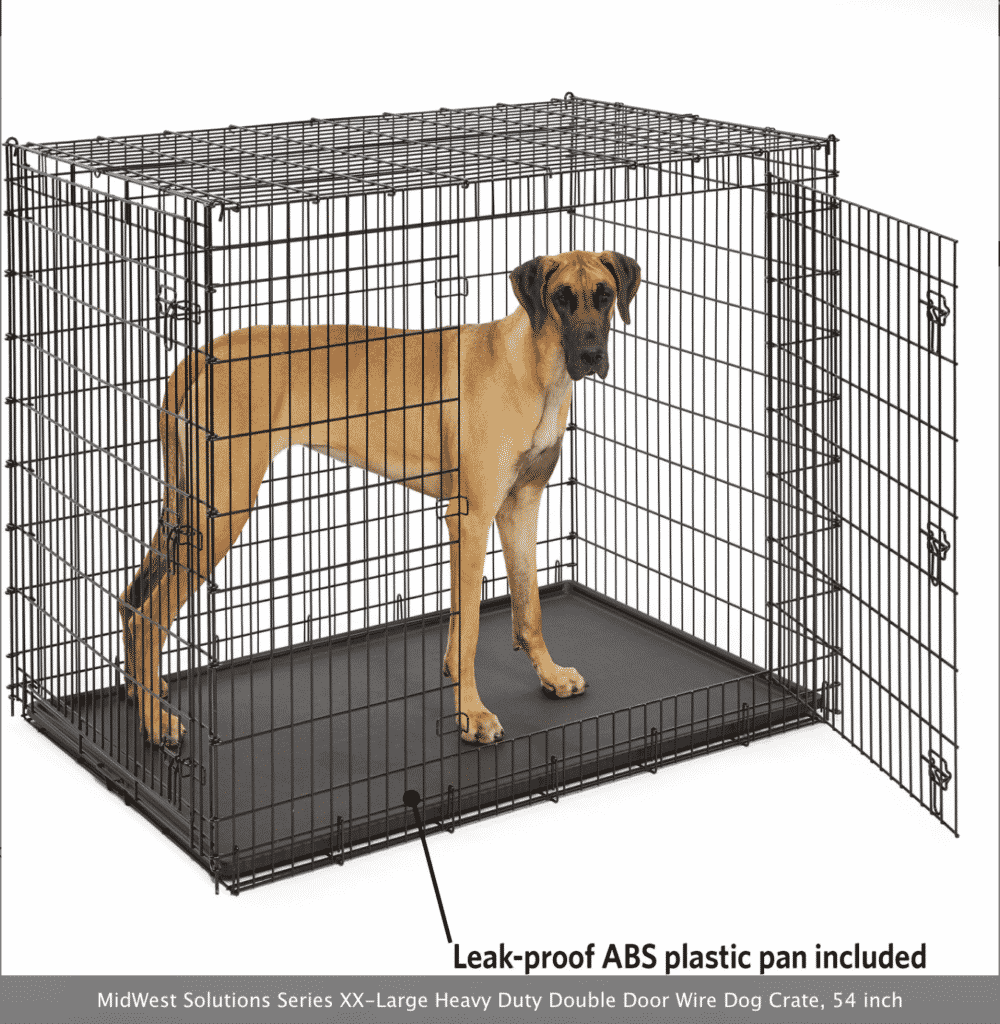
One of the main advantages of positive reinforcement training is that it is relatively easy to learn and can be used with both dogs and other animals.
Additionally, positive reinforcement training is often considered to be more humane than other types of training methods, such as punishment or dominance-based training. Finally, positive reinforcement is a very versatile form of training and can be used to teach a wide variety of behaviors.
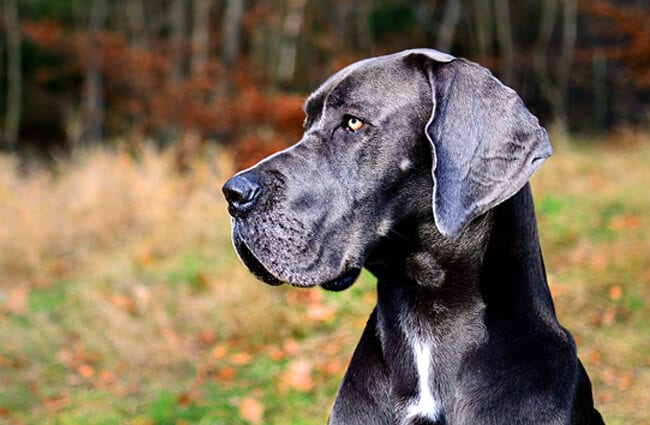
There are a few things to keep in mind when using positive reinforcement training. Make sure the rewards you use are meaningful to your dog and that you deliver the rewards consistently.
Additionally, remember that positive reinforcement is not a magic bullet and will not work instantly. It may take some time and patience for your dog to learn the desired behavior. However, when done correctly, positive reinforcement training is a safe, humane, and effective tool.
Great Dane Recall with an Electric Collar: What is it?
Recall is an important skill for any Great Dane, or any dog, to learn. Following commands is a basic part of dog training and a vital/essential part of training a Great Dane. Teaching your Great Dane recall with an E collar may be one of the most important things you ever teach them. Why? Because one day, it could protect them from dangers or even save their life!

Shock collars or bark collars are very different than e collars. Many people stumble upon articles about training collars when looking up the best shock collar for training their dog in behavior. Recall, pulling, or other unwanted behaviors are common problems. Many times, owners resort to shock collars or bark collars for these common behaviors.
Things that are More Aversive Than an E Collar in Training
9 Tips to Having a Trained Great Dane with Balanced Training
Dog Halo Collar Review
What is the Best Leash for Great Danes?
There is a difference between a shock collar and an e-collar. We will discuss which training tool is better. Before training your dogs with any shock collar, please be sure to investigate the differences between a shock collar and e collars.
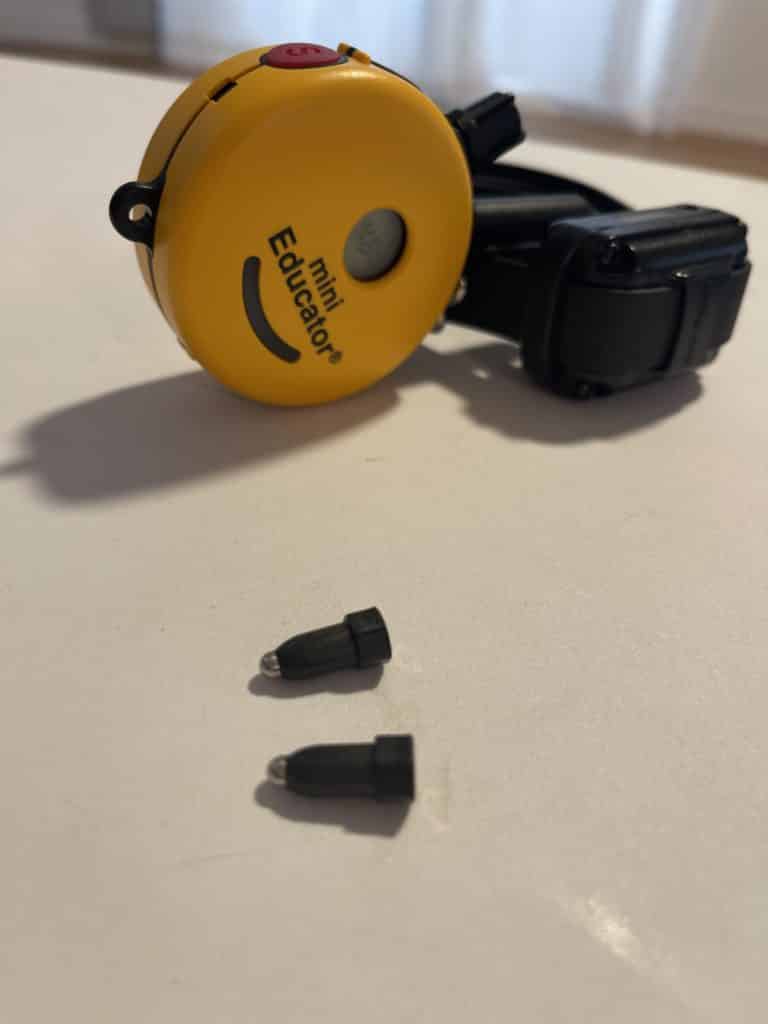
Great Dane Recall with an E-collar: Why does it matter?
Using e-collars in training Great Danes (even a young Great Dane) allows you to train them to come back to you when they are off leash, which can be helpful in many situations. Teaching recall with an e collar provides safety, something that all pet parents value for their pets.
There are certain situations where the behavior of running off can be life threatening for dogs. Any experienced trainer will tell you that you must work on this behavior while your dog is a puppy in order to build focus and control. If you are concerned that your Great Dane might run off, run into the street, or even run away, you should consider teaching them recall with an e collar.
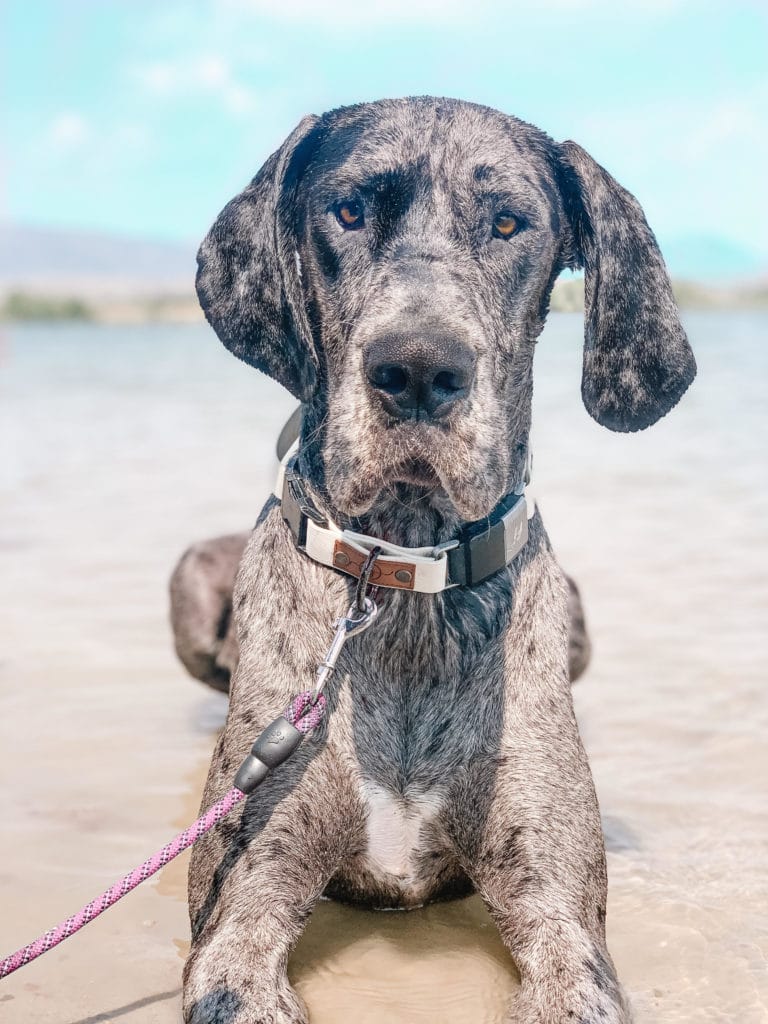
The ability to train your dog (or two dogs) to return when called is, of course, an important skill for any Great Dane to learn because it can help keep them safe. Teaching recall with an e collar allows you to provide your Great Dane with freedom to run and play, while also protecting them.
If your Great Dane ever gets off leash and runs away, being able to call them back to you can mean the difference between life or death. For example, if your dog is getting too close to a busy road, you can call them back to you before they have a chance to run into traffic. For that reason, we believe that teaching a Great Dane recall with an e collar is one of the most valuable lessons you can teach them.
Life Changing Collars for Dogs
If your dog is focused on their owner, a command can be given which could save their life.
We believe that recall is one of the most important skills that any owner of dogs can teach, since safety is so important, from puppy to adulthood.
Many want to jump directly to more flashy ‘quick fixes’ such as training their dog with a shock collar or training their Great Danes with the ‘best shock collars’ for fast training, but rest assured: It is always best to start dog training on a standard collar and providing solid a solid command that your dog will understand throughout life.
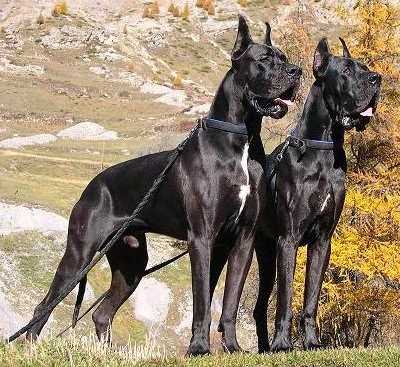
Additionally, using a shock collar in training your Great Dane can actually instill fear and intimidation, which could result in them becoming more defiant.
Step 1 to Teaching Recall with an E Collar: The Importance of Dog Training with a Leash
Before you begin teaching recall with an e collar, you must follow step one. Practice basic skills before you start teaching your Great Dane higher level skills with any training collar.
The Best Leashes for Great Danes
Working on a flat collar or regular collar will help ensure that your dog is listening to you and following your commands the entire time that you are out on walks together.
The foundation of teaching a Great Dane recall with an e-collar begins with basic, good citizen skills on a basic collar.
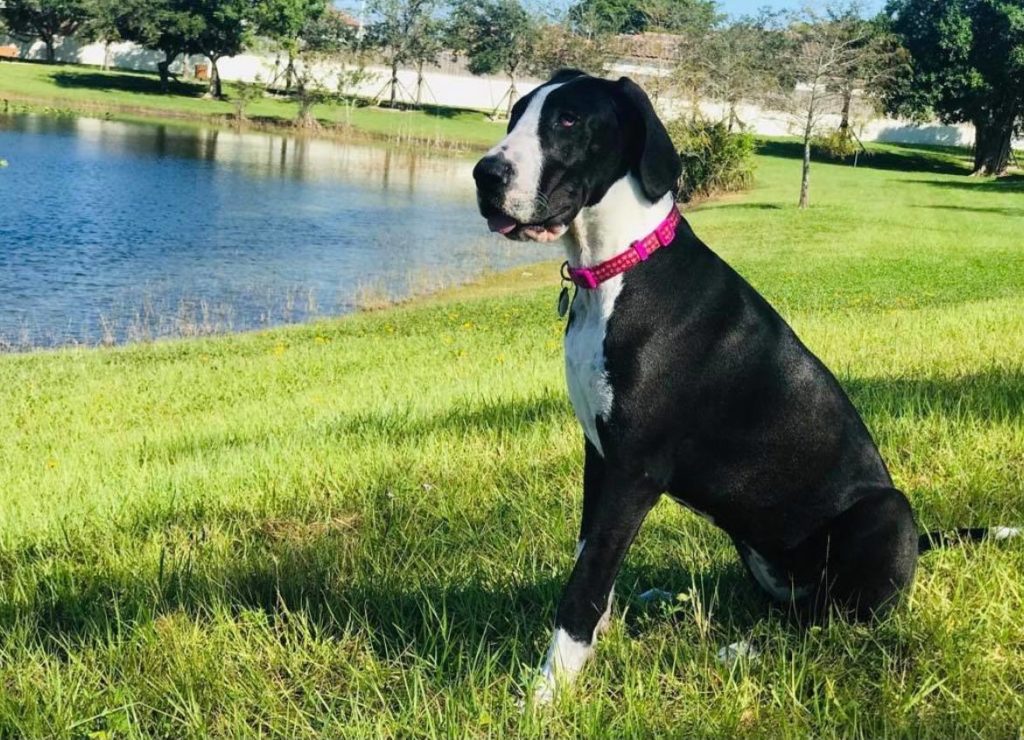
Training your Great Dane starts the day you bring them home. Dogs begin learning at birth, when they are born blind and deaf in a world they have to navigate!
When you meet your Great Dane, it becomes your responsibility to help them be the best dogs that they can be.
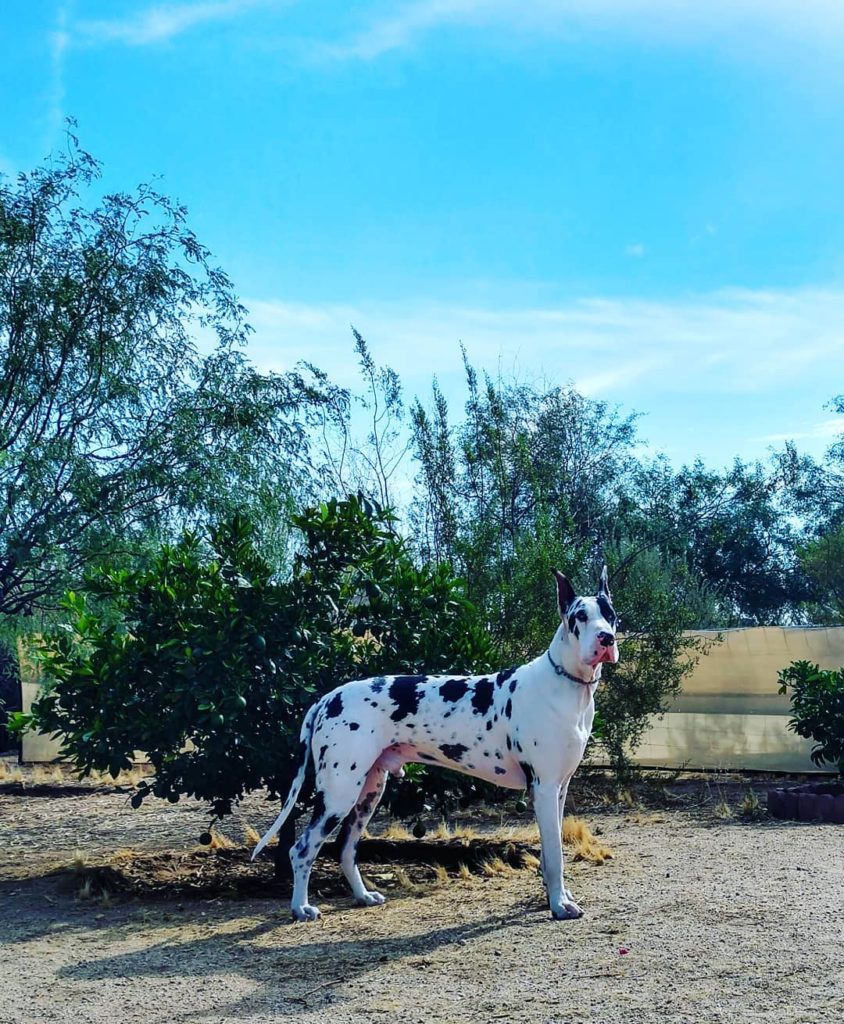
Steps to training your dogs
There are several steps you can take to build strong foundational skills:
- Use a lead and collar that is comfortable for both you and your dog. This will help make walks more enjoyable for both of you and prevent any potential injuries, pulling or focus issues.
- Start with short walks around the block or in your neighborhood with your dog. As your dog gets better at walking on a standard collar, you can gradually increase the length of and, at times, command them to wait next to you in a ‘heel’ position.
- Make sure to provide plenty of positive reinforcement training during walks. This can include treats, petting, or verbal praise. There is an abundance of videos on how to include positive reinforcement while you train.
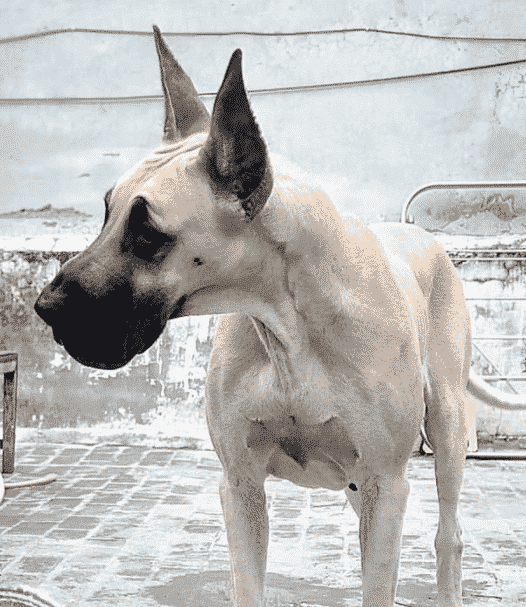
- If your dog starts to pull on walks, stop walking and wait for them to calm down before continuing to give them any further commands. Pulling can be a sign of over-stimulation, and you should train this behavior with small and frequent training sessions to help dogs remain calm and collected.
- You can utilize other tools during foundational dog training such as a prong collar, regular/flat collar, or a verbal command to help your dog train in a correct way.
- Work on maintaining eye contact with your dog during walks. This training method will help your dog to focus on you and listen to your commands the correct way.
By following these steps and working with your Great Danes, you can build strong skills help them focus and not pull. Once you have a correct foundation, you can start on the course of working on teaching higher level skills with a training collar.
Please note:
Using a training tool such as a prong collar or e-collar is very different than a shock collar. We do not promote training your Great Danes or other dogs with the use of shock collars.
Using shock collars as a form of training is unethical and can have an impact on the way your dog views life, accepts a command, or represents the breed in regards to temperament and disposition. We do not recommend anybody to shock their Great Danes, and will not be recommending any shock collar or discussing the ‘best shock collar’ to train your dogs.
Once your Great Dane has basic leash skills, you can begin the process of teaching them recall with a long leash.
Step 2 to Teaching a Great Dane Recall with an E Collar: Using a long leash
Long leashes are very helpful when teaching recall because they allow your dog to have some freedom while still being under your control.
There are a few things to keep in mind when using a long leash:
- Make sure the long leash is long enough to provide freedom.
- Attach the leash to a comfortable collar and find a space with plenty of room (20 feet or more).
- Start by calling your Great Dane’s name and then giving the command to come. As they start to walk towards you, praise them and give them a treat.
- If your dog does not come when called, do not pull on the leash or drag them towards you. This will only make them scared or resistant to coming when called.
(If you need more information on the important difference between a SHOCK (sharp static correction meant to scare/startle) collar and an E-Collar (gentle muscle stimulation meant to work as a communication), read our blog post here).
It is now time to discuss the different settings on your e-collar. You will need to know these settings in order to teach recall on a long leash. Please note, when discussing these settings, we are referring to e-collar technology 900 series.
- Continual Stim– This is when the e-collar is sending a continuous signal to your dog. During continual stim, hold down the stim button.
- Momentary Stim– This is when the e-collar sends a signal to your dog for a brief moment. This is the most common setting used, but not always the best, depending on the dog’s personality.
- High Performance/Boost– This setting is a mix of both continual and momentary stim. It starts off with momentary stim and automatically switches to continual stim if your dog does not respond.
Now that you understand the different settings on your e-collar, it is time to discuss how to properly use them when teaching recall.
Step 3 to teaching Recall with an E Collar: Timing
E-collar training (even while on a long leash) is all about timing.
When your Great Dane is on the end of the long leash, apply a bit of leash pressure, and direct them to come towards you with the word “come”. At the same time, press and hold your stim button (at their working level) with your e-collar programed to ‘Continual’ stim.
Watch your Great Dane and the MOMENT they turn their body to move towards you, begin dialing the ecollar down slowly with your thumb.
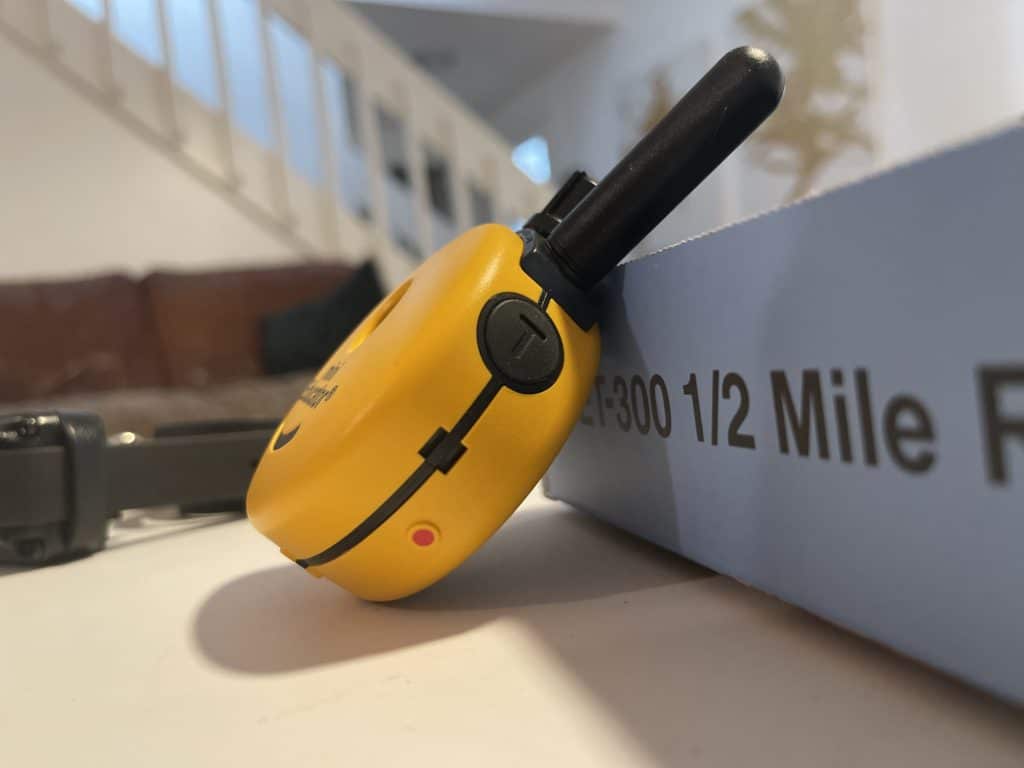
You will also want to use a marker word, such as ‘YES’.
Use the marker word when they turn their bodies to you. Using a marker word allows your Great Dane to understand the exact movement that you expect from them, and feel rewarded for it.
Think of it almost like a game of ‘hot and cold’. If your Great Dane moves closer when hearing the ‘come’ command, you get ‘colder’. If they move further, you get hotter!
Play this game consistently and daily so that your Great Dane knows what the word “come” means and associates it with returning quickly.
Step 4 to Teaching Recall with an E Collar: Introduce a Safe, Off-Leash Practice Area
Next, we will introduce a safe place for your Great Dane to practice recall without a leash.
Find a large fenced area where they can run around freely. It is important that the fenced area is secure and escape-proof.
When your Great Dane is off the leash, supervise them at all times. Do not leave them unsupervised even in a fenced area for risk of danger.
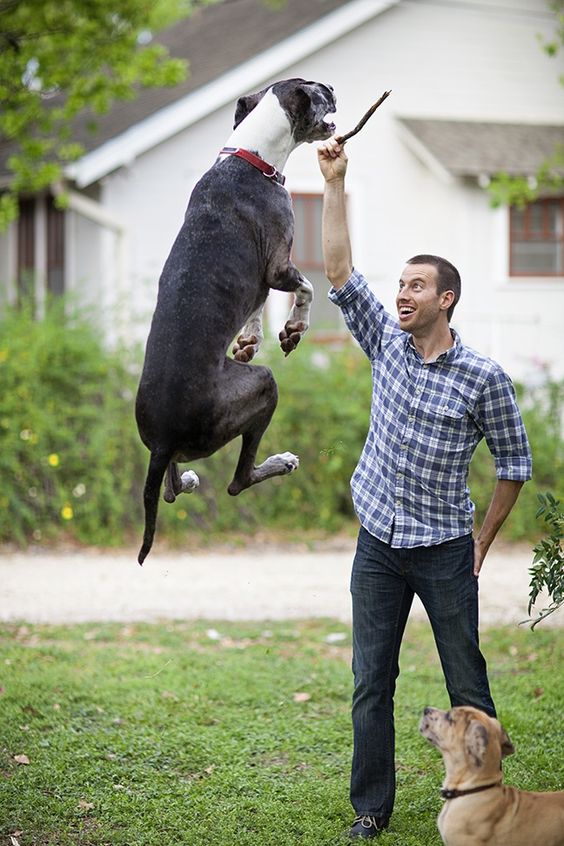
Additionally, you want to make sure that this ‘practice area’ is very low distraction.
Areas that would make bad practice spots may include dog parks, busy public parks, or areas that may remind them of fun memories they’ve had with friends.
Areas that make great practice spots include large backyards, quiet/empty parks away from streets, or fenced in, dog-friendly areas with no other dogs present.
Once you have found your practice location, begin implementing the same procedure of the ‘hot and cold’ technique, without the long leash this time.
Make sure to heavily reward them when they return by using the marker word, lowering the stim, and using treats (if you want).
The lifestyle of freedom, fun and exploration is waiting for you.
Step 5 to Teaching Recall with an E Collar: Practice Makes Perfect with Your Great Dane
Using any tool in training with your dog/dogs is going to take dedication and time. Great Danes require patience in their training and the use of electric collars is not a quick fix. Be patient with your dog and remember that this training skill is something that is going to take time.
Even though people claim that shock collars are an ‘overnight fix’ in training their dogs, we recommend taking the time to train slowly and patiently with your dog on a reliable training collar such as the devices we highly recommend.
If you’re interested in purchasing one, be sure to check out our favorite collars for training dogs here:
We hope that you and your Great Dane love the process of learning recall as much as we do. The lifestyle of freedom, fun and exploration is waiting for you. Hard work and patience will pay off! Be sure to reach out with any questions you have.
Read more:

